Health Articles
Find out more about your health here from our health professionals!

Sleep hygiene: Is it important?
Sleep hygiene refers to a healthy routine sleep habit that helps one sleep throughout the night or get enough quality sleep. These habits are the cornerstone of cognitive behavioural therapy, the most effective long-term treatment for people with chronic insomnia.
There are certain habits that should be cultivated if you are experiencing poor sleeping habits before you opt to take medication or any remedies. You should consider practising good sleeping hygiene, such as going to bed at the same time every night and being consistent with it. Make sure the bedroom is quiet, dark, relaxing, and at a comfortable temperature. Remove electronic devices, such as TVs, computers, and smartphones, from the bedroom. Avoid large, heavy meals, caffeine, and alcohol before bedtime. Regular exercise during the day is able to make one fall asleep easily at night.

How can all these habits help you get good-quality sleep? (3)
Behaviour during the day and before bedtime has a major impact on sleep. Either it can promote healthy sleep or contribute to sleeplessness.
The daily routines that include what we consume, the medication that we take, how we schedule our days, and how we spend our evenings can significantly affect the quality of sleep. Sometimes, for a person who is experiencing trouble sleeping, it takes only a slight adjustment in their daily routines, or in some cases, they are required to write a two-week diary to help them understand their routines that affect their sleep quality.
Why is good-quality sleep important? (3,4)
Insufficient sleep has major health consequences for adults, adolescents, and young children. Strong evidence found that adults who have insufficient sleep develop numerous health complications, including an increased incidence of chronic disease. Those who have short sleep duration (less than 7 hours per night) and poor sleep quality are associated with cardiovascular morbidity and metabolic disorders such as glucose intolerance, which will also lead to obesity, diabetes, heart disease, and hypertension. Individuals who experience shorter sleep duration are at 1.48 times greater risk of developing and dying of coronary heart disease than those who have sufficient sleep, and they are 1.15 times more likely to have a stroke.
Adults who sleep less than 7 hours per night also have greater difficulty concentrating, remembering, and performing daily activities than those who sleep 7 to 9 hours per night.
When it comes to children, those who experience shorter sleep durations are more likely to become obese than those who do not. Insufficient sleep also affects immunologic function and the development of mood disorders and is associated with depression, deficits in cognition, memory, and learning, and reduced quality of life.
One major consequence of insufficient sleep is daytime sleepiness, which reduces alertness and causes slow reaction times, leading to occupational and medical errors, workplace injuries, impaired driving, and motor vehicle accidents. In 2009, almost 5% of adults in 12 states reported that during the previous 30 days they had nodded off or fallen asleep while driving. In 2005, drowsy driving contributed to 100,000 motor vehicle accidents and 15,000 deaths.

What needs to be done? (4)
As medical practitioners such as doctors, nurses, pharmacists, nutritionists, etc., one must consider the sleeping factor when advising lifestyle modification. One must also ensure that patients or customers are well informed regarding the medication or supplement that they are taking, which will induce symptoms that hinder them from sleeping, such as tachycardia (irregular heart rate), etc. Thus, they need to adjust the timing of medication consumption, sleeping time, and daily activities. One must also consider the sleep factor in finding the diagnosis or underlying cause of one’s health condition.
At this point, the public must be reminded that sleep is an essential factor in maintaining health, especially for diseases like hypertension. There are various factors that can hinder sleep or cause trouble sleeping, so adjustments in lifestyle sometimes need to be made for the improvement of life quality.
References
-
Centre for Disease Control and Prevention (CDC). Tips for better sleep (2016). https://www.cdc.gov/sleep/about_sleep/sleep_hygiene.html (Accessed on September 4, 2020).
-
American Academy of Sleep Medicine (AASM). Healthy Sleep Habits (2017). http://sleepeducation.org/essentials-in-sleep/healthy-sleep-habits (Accessed on September 4, 2020).
-
Sleep Foundation. Nilong Vyas. Sleep Hygiene (2020). https://www.sleepfoundation.org/articles/sleep-hygiene (Accessed on September, 2020).
-
Irish, L.A., et al. (2015). The Role of Sleeping Hygiene in Promoting Public Health: A Review of Empirical Evidence. Sleep Medicine Reviews. Volume 22, Pages 23-36. https://doi.org/10.1016/j.smrv.2014.10.001

Sleep and Chronic Diseases
Sleep is always less likely to be linked with chronic diseases, since many people think that it is something that is not related. However, sleep disturbance might be caused by symptoms of chronic diseases, or the other way around, where sleep disorders can eventually lead to chronic diseases. That is to describe how tight the cycle is between sleep and chronic diseases (1).
Chronic disease is the kind of disease that lasts for a long time, such as Diabetes and Cardiovascular diseases. It usually cannot be cured, so it needs to be managed (1, 2).
Two elements that contribute to sleep disorders are the chronic fatigue and pain that people with chronic illnesses experience on a daily basis. They struggle to get to sleep at night and are sleepy all day as a result of this condition. The depression or anxiety that people with chronic diseases experience in relation to their illness can also be a cause of their nighttime sleep disturbances. Certain medications taken by people with chronic illnesses can occasionally cause conditions that prevent them from falling asleep (1, 2).
Sleep, diabetes, obesity, and cardiovascular diseases.
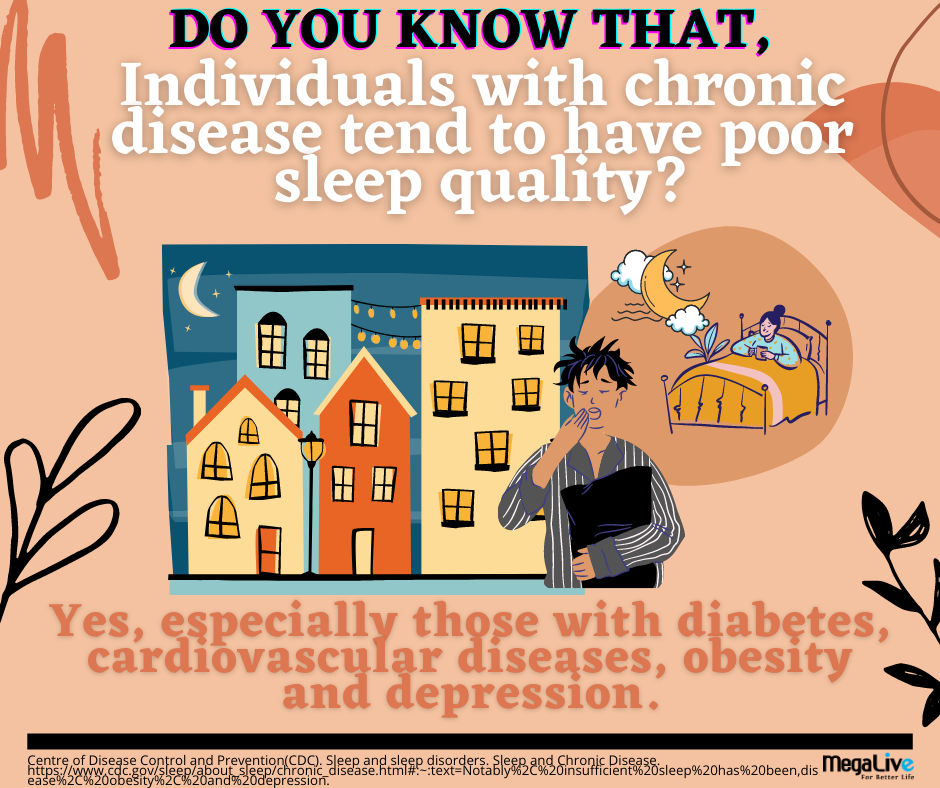
Diabetes and sleep problems often go hand in hand. Diabetes can cause sleep loss, and not sleeping well can cause diabetes due to frequently eating at night, which will then lead to obesity and various underlying factors (3, 4).
Individuals with diabetes who experience a spike in blood sugar will not have good quality sleep since the kidney is trying hard to excrete the sugar by urinating, so individuals with a spike in blood sugar level will usually experience getting up and going to the toilet all night long (3, 4). Thus, the only solution to this is to control blood glucose levels, eat well during the day, and eventually experience a good sleep at night.
Touching on the fact that not sleeping well can cause diabetes due to frequently eating at night, one study, found that people who get less sleep tend to be heavier than those who sleep well, since being overweight is a risk factor for the development of diabetes (3, 4).
Obese individuals also experience sleep apnea, a condition of sleep disorder indicated by loud snoring and paused breathing when you sleep. The culprit behind this may be the weight gain, which causes fat to deposit around the upper airway and obstruct breathing (3, 4).
There are many effective treatments for sleep apnea. These include lifestyle changes such as weight loss for mild cases and devices to open-up blocked airways for more significant cases (3, 4).
As for sleep and cardiovascular diseases, when we sleep, our blood pressure goes down. This makes our body and mind relax and be calm. However, for individuals with sleep problems, their blood pressure level will stay higher for a long time since it does not get the chance to rest. Thus, prolonged high blood pressure can lead to various heart disease problems, such as stroke (5).

Conclusion
Sleep is as important as eating. It acts as the reset button for the whole-body function. It allows the body's systems to realign, grow, and slow down before it kicks off another day. Thus, do yourself a favour today by getting sufficient quality sleep.
But if you already have trouble sleeping, find out ways to improve it either by managing your underlying health condition that hinders you from getting good sleep or by following some sleeping hygiene techniques in order to train your body and mind to fall asleep. It is not a one-day job; it requires many days, weeks, and perhaps months, but if you are consistent, it will surely have a fruitful result. Happy sleeping, and live your life to the fullest.
References
-
Centre of Disease Control and Prevention (CDC). Sleep and Sleep disorder. Sleep and Chronic Diseases. https://www.cdc.gov/sleep/about_sleep/chronic_disease.html#:~:text=Notably%2C%20insufficient%20sleep%20has%20been,disease%2C%20obesity%2C%20and%20depression. (Accessed on September 11, 2020).
-
Sleep and Chronic Illness. https://www.webmd.com/sleep-disorders/sleep-disorders-sleep-and-chronic-illness (Accessed on September 11, 2020).
-
The Sleep – Diabetes Connection. https://www.webmd.com/diabetes/features/diabetes-lack-of-sleep (Accessed on September 11,2020).
-
Deepak Khandelwal, Deep Dutta, Sachin Chittawar, and Sanjay Kalra (2017). Sleep Disorders in Type 2 Diabetes. Indian J Endocrinol Metab. 21(5): 758–761. DOI: 4103/ijem.IJEM_156_17
-
Centre of Disease Control and Prevention (CDC). How does sleep affects your heart health. https://www.cdc.gov/features/sleep-hearthealth/index.html#:~:text=Adults%20who%20sleep%20less%20than,attack%2C%20asthma%2C%20and%20depression.&text=Some%20of%20these%20health%20problems,High%20blood%20pressure. (Accessed on September 11, 2020).

Stress and Sleep
Stress is a response to challenging circumstances that we are in; it is also a response to things that happen in our daily lives. Everything that happens, be it in our daily lives or not (to someone else), can somehow affect us emotionally, physically, and behaviorally. Stress is not all bad; the right amount of stress will act as a precursor to help us do our best and keep us alert and energetic. However, too much stress can make us tense and anxious and hinder our sleep quality (1, 2).
What is making you stressed might not make others stressed, and vice versa. When it comes to stress, there are just no standard parameters to measure. Since the amount of stress that individuals perceive differs from one another, even when it stems from the same source of stress (1, 2, 3).
Stress induces multiple body reactions in the brain, nervous system, endocrine system (hormones), and immune system. Research named it hyperarousal, which is a state when our body is in a stress state. In other words, our brain perceives the condition as being on alert (1, 2, 4).
The signs of a hyperarousal state include the fact that you cannot shut down your busy mind. Your mind seems to have no shut-down button. It keeps going over and over your stress, worries, and frustrations, which you contemplate from various angles. Which is also one of the reasons that hinder you from getting enough quality sleep. Secondly, when you are experiencing muscle tension for no reason, It can be aches in areas such as the neck and shoulders or a constant headache. Thirdly, when you are experiencing a heart race. This is particularly associated with the hormone cortisol (a stress hormone). This will then result in a condition where your body and brain are wide awake, making it difficult for you to fall asleep. This explains why individuals who are stressed experience sleep disturbance. (1)

It is unfair to discuss in the area that stress causes sleep disturbances without noting that there are other conditions that will make individuals who experience stress sleep excessively as well. It is somewhat a mystery to experts as well, though it is hypothesised due to the different kinds of stress that individuals experience and the different coping mechanisms they develop in adapting to different stressors (3).
What to do (4)
Fortunately, there are habits that, if you cultivate them diligently, will train your mind to ease stress and help you sleep. First, practise relaxation exercises such as progressive muscle relaxation or deep breathing techniques before turning in for the night. This technique can help you unwind. It will help your body and mind dial down the stress. It is also wise to actually have relaxing pre-sleep rituals, such as changing into comfortable clothing for sleep, dimming your bedroom light, being in a comfortable situation, taking a warm bath or drinking a cup of warm water or milk, avoiding caffeinated drinks like soda, tea, and coffee in the late afternoon, and slowly nesting yourself.
Of course, these are not tips that will work for everybody; anyhow, you've just got to do some trial and error. You just have to give it a try and adjust it accordingly so that it will suit your condition better.
Lastly, if you have anything in your mind that is stressing you out, think of it as just a phase that you have to endure. Whatever situation you are in, you know it better than anyone else since you have the key to getting yourself out of it. You are in masterful control of it; soon you will be out of this. Think positive thoughts and try to talk to someone you trust. If you think your condition is worsening, it may be a sign for you to seek medical help.
References
-
Sleep Foundation.org. National Sleep Foundation. Stress and Insomnia (July 2020). https://www.sleepfoundation.org/articles/stress-and-insomnia (Accessed on September 20, 2020).
-
Sleep Foundation.org. National Sleep Foundation. Relaxation Exercises for Falling Asleep (July 2020). https://www.sleepfoundation.org/shift-work-disorder/shift-work-you/relaxation-exercises-falling-asleep (Accessed on September 20, 2020).
-
Kim, E. J., & Dimsdale, J. E. (2007). The effect of psychosocial stress on sleep: a review of polysomnographic evidence. Behavioral sleep medicine, 5(4), 256-278.
-
Tips to reduce stress and Sleep better (2019). https://www.webmd.com/sleep-disorders/tips-reduce-stress (Accessed on September 20, 2020).

Sleep and sleep disorders

Sleep disorder is a group of condition that affects individuals’ ability to fall asleep on daily basis, in another word it is a disruption to sleep pattern. It is a wide spectrum of diseases, it refers to the alteration in the sleep quality, quantity, and pattern. It could be due to stress or it is an underlying problem to diseases. This condition can also persist in long term or short term. The recommended sleeping hour for normal adults are about 6-8 hours, whilst for children the sleeping hours is even longer (e.g: newborn up to 16 hours), however as for elderly usually it is shorter which is only about 4-5 hours of sleep.
Cause of sleep disorder?
Common cause of sleep disorders includes work in the shift hour, physical problems such as difficulty in breathing, frequent urination at night, pain (e.g: arthritis). It can also be due to psychological or psychiatric disorders such as schizophrenia, depression, anxiety disorders, and stress. Another condition that can lead to sleep disorder or sleep disruption includes drugs and alcohol abuse, or if individuals is exposed to environment that is not suitable for sleeping.
The interruptions or alterations in sleeping quality, quantity and pattern can affect body more than we think of, since sleep primary functions is to provide rest and restoring body’s energy levels.

Currently the problem with regards to sleeping has increase tremendously. If this condition prolonged individuals should quickly seek help from medical professionals.
Signs for sleep disorder?
The signs for sleep disorder is when individuals consistently taking more than 30 minutes to fall asleep, waking up several times in the middle of the night and remain awake for hours, easily irritate during the day (even after seven to eight hours of sleep at night), frequent and/or long nap during the day, difficult to concentrate at work or school, waking up too early in the morning, loud snoring while asleep, require stimulant such as caffeine to keep you awake during the day, sometimes certain people even experience irresistible urge to move legs, or a tingling or crawling feeling in the legs, particularly at bedtime.
Common sleep disorder is insomnia, it includes symptoms like, feeling not fresh in the morning even after you have sleep for 7 – 8 hours, waking up too early in the morning, and trouble falling asleep or staying asleep. The American College of Physicians (ACP) recommends cognitive behavioural therapy (CBT) as a first-line treatment for chronic insomnia in adults. Apart from this, sleep hygiene training is also recommended and should be introduce to individuals with insomnia. Sometimes, there are behaviour that interfere with difficulty in sleep thus by cultivating healthy sleeping habits it can help you to change some of these disruptive behaviours.
Apart from insomnia, sleep apnea is also one of the common sleep disorders. It is defined as interrupted sleep caused by periodic gasping or snorting noises, or the momentary suspension of breathing. A deviated septum or polyps in the sinuses can cause difficult breathing during sleep. Individuals with sleep apnea usually unable to get enough oxygen while sleeping thus causing sleep disturbance.
Other known sleep disorder includes, narcolepsy, a condition when a person cannot control when they fall asleep and they will have episodes of unwanted sleep. Circadian rhythm sleep disorder is a condition in which a person has trouble aligning their body natural inclination for sleep with the rising and setting of sun. Klein-Levin syndrome a.k.a sleeping beauty syndrome, a condition in which a person will sleep for period of two or more days at a time.
Conclusion
References
- Warning Signs of a Sleep Disorder. https://www.healthline.com/health/sleep-disorders-warning-signs (Accessed on September 18, 20).
- Everything you need to know about insomnia. https://www.healthline.com/health/insomnia (Accessed on September 18, 20).
- Fighting Insomnia with Therapy. https://www.healthline.com/health-news/fighting-insomnia-with-therapy#1 (Accessed on September 18, 20).
- Ministry of Health Malaysia. MyHealth Portal. Sleep Disorder. http://www.myhealth.gov.my/en/sleep-disorder/ (Accessed on September 18, 20).

Sleeping Pills & Natural Sleep Aid

Sleeping pills are a class of sedatives which act on the central nervous system and help a person fall asleep quickly. There are a few types of medicines that can produce sedative effects. Examples are antidepressants, barbiturates, and benzodiazepines. Benzodiazepines are the most common anxiolytics and hypnotics. Some Benzodiazepines are used to relieve anxiety, alcohol withdrawal, panic disorders and certain seizures disorders.
Sleeping pills usually lose its effect after a while because body gets used to the medicine, thus explain why it can only be used for short duration. There is also common side effect from taking sleeping pills such as drowsiness, dizziness, lack of co-ordination and slurred speech
Natural Sleep Inducers, melatonin in Malaysia? (3)
Which is why for some people before they opt for sleeping pills, they prefer to try natural remedies to induce sleep. In Malaysia it is not common, and it is based upon prescription to obtain melatonin. However, in U.S melatonin is one of the common over the counter (OTC) medicine where people can just purchase to improve their sleep quality.
Milk and sleep? (4)
Among range of products of natural remedies where people can look for when it comes to sleep aid are, it is advisable to drink warm milk before sleep to induce sleep. The science behind it is due to tryptophan and melatonin compound in milk. Tryptophan is an amino acid found in a variety of protein-containing foods. It plays an important role in the production of the neurotransmitter known as serotonin. Serotonin boosts mood, promotes relaxation, and functions as a precursor in the production of the hormone melatonin. Melatonin, also known as the sleep hormone, is released by your brain. It helps regulate your circadian rhythm and prepare your body for entering a sleep cycle. However, there is currently no evidence to suggest that a single glass of milk contains enough tryptophan or melatonin to significantly influence your body’s natural production of melatonin or to independently treat a disordered sleeping pattern. The same thing goes to the temperature of milk and how does it affect sleep, it is just that warm liquids have calming effect on the nervous system and may be more effective for lulling you into sleep than cold drinks. However, result depends on the individual. According to studies, any bedtime ritual can actually improve sleeping quality, since it helps body to slow down and relax, it gives signal to body to shut down.
Valerian and sleep? (3,5)
Apart from this, valerian is usually use for centuries in helping individuals to sleep better. It is an herbal medicine made from the root of the plant. It has been noted to act as sedative, according to study, valerian can be helpful in treating insomnia and improving sleep quality. Although more research is needed to establish this, but studies show that taking valerian can reduce the amount it takes to fall asleep by about 15 to 20 minutes. Doses of 400-900 mg of valerian extract taken up to 2 hours before bed seem to work best. Continuous use for several days, even up to four weeks, may be needed before an effect is noticeable. Some studies show that valerian can help improve sleep when combined with other herbs, including hops and lemon balm. Taking valerian might also improve the sleep quality of people who are withdrawing from the use of sleeping pills. However, some research suggests that valerian does not relieve insomnia as fast as “sleeping pills.”
Chamomile and sleep? (3,6)
Chamomile is a gentle herb that has calming effect. It promotes relaxation and sleep. Although there is no standard dosage of chamomile, it can be used in several ways such as use dried chamomile flowers to make tea, steep prepared tea bags sold at your local grocery store, inhale or apply diluted chamomile essential oil to your skin. Herbal essential oil can be used in order to induce calm environment and prepare your body to sleep. It can be cultivated partly as sleeping ritual, so your body will adapt to it in such a way that its going to make you feel sleepy.
In conclusion…
Most of the non-medication kind of remedies such as milk, valerian, chamomile, and valerian, usually give slower effect as compared to medicated sleeping pills. However, it can be used to treat mild insomnia and withdrawal symptoms from medicated sleeping pills, since medicated sleeping pills cannot be taken in the long run. Thus, both medicated and non-medicated has its own pro and cons, you may consult pharmacist or doctors to better suit your situation in choosing for sleeping pills or natural sleep remedies in order to improve your sleep quality.
References
- Ministry of Health Malaysia. My Health Portal. Sleeping Pills (Sedatives). http://www.myhealth.gov.my/en/sleeping-pills-sedatives/
- Sleeping Pills: What You Need To Know? https://www.webmd.com/sleep-disorders/features/sleeping-pills-what-need-know
- 8 Natural Sleep Aids: What works? https://www.healthline.com/health/healthy-sleep/natural-sleep-aids
- Should You Drink Milk Before Sleep? https://www.healthline.com/nutrition/drinking-milk-before-bed
- Valerian. https://www.webmd.com/vitamins/ai/ingredientmono-870/valerian#:~:text=Valerian%20is%20an%20herb.,inability%20to%20sleep%20(insomnia)

Tips for Joint Health
Joint is the connection between two bones structure that allows you to bend and being flexible. Part of the structure are also, smooth tissue called cartilage, synovium and synovial. Synovial is fluid that act as lubricator in the joint area (1,2).
Below are few tips for healthy joint:
Maintaining healthy weight
Joint pain usually occurs as a result of the normal wear and tear thus it is no surprise that the heavier the person the more load joint must carry, thus, in the long run this will develop pain in the joint. Study found out that, just by being obese an individual has four- to five-fold increase in the risk of developing osteoarthritis (1, 2).
So, now go and weigh your body and find out your healthy weight
(psssttttt you may talk to us as well)!

Exercise regularly
We always know that by being physically active it can lower the risk of getting diseases. However, what if one already has the joint problem? How can one exercise and be physically active?
Many do not know that by performing correct exercise and do it with correct technique, it can alleviate joint pain and/or numbness that usually people with osteoarthritis or rheumatoid arthritis have. Aerobic exercise (Exercise that can increase heart rate) such as swimming can improve joint health (2,3).
If you already experiencing joint pain and would like to alleviate the pain using exercise method in combination with trying to get healthy weight, bear in mind to apply heat, because heat can relax your joint and muscle, you can also try to use warm towel or hot pack. Always go for slow movement and warm up your body with stretching first for about 10minutes to 15 minutes. If you feel pain, take a break or slow down.
Another easy tip is that, do not be a couch potato! By not moving your joint it increases the tendency for your joint to become stiff hence in the long run you will experience joint pain (2, 3).

What about food?
Eat food that is high with Calcium and Vitamin D
Food plays a huge role in our daily life, not only that it nourishes our body with nutrient, vitamins and minerals but it also at the same time prevent us from getting diseases. Deficiency of minerals and vitamin such as Vitamin D and Calcium can lead to many problems such as joint problem (1,4,5).
Calcium is the healthy bone mineral. About 99% of the calcium in the body is stored in bones and teeth. It is mineral that makes them hard strong. Study found out that, adequate amount of calcium intake lead to better bone and joint health. In older adults, especially in post-menopausal women, bone is broken down at a faster rate than it is built. If calcium intake is too low, this can contribute to osteoporosis. Thus, consumption of food high with calcium content is very crucial since young (1,4,5).
Apart from dairy product, there are various other food that is close to Malaysians but people do not know that is high with calcium such as fish with edible bones (sardines and anchovies), beans and bean products such as yellow dhal, tofu, and tempeh, or locally processed food such as cencaluk, budu, vegetables like spinach, cekur manis, tapioca leaves, kailan and brocolli. In fact the bioavailability of calcium in broccoli is just about the same in milk!
Check this out…
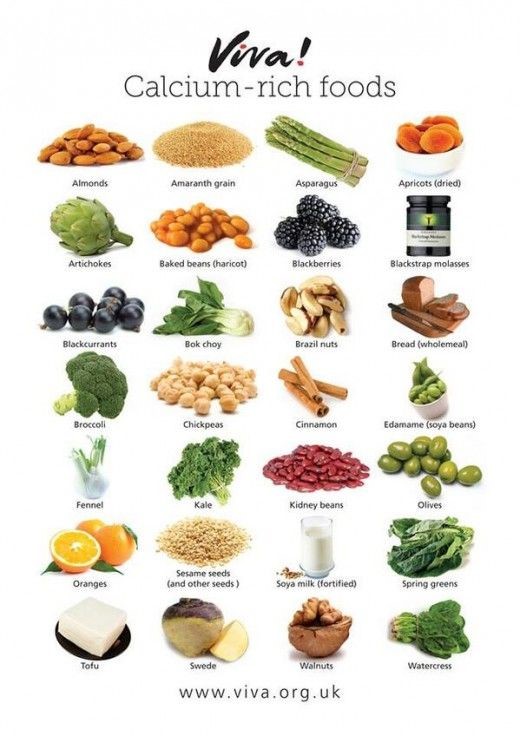
Whilst for Vitamin D, usually we can get it from the exposure to sunlight, however, since nowadays we often stay indoors and use products with SPF when we are outside thus lesser vitamin D is able to absorb by our body. Vitamin D is important for the absorption of calcium, even when there is enough calcium intake, when vitamin D is not enough in the body, calcium will then become a waste (1,4,5).
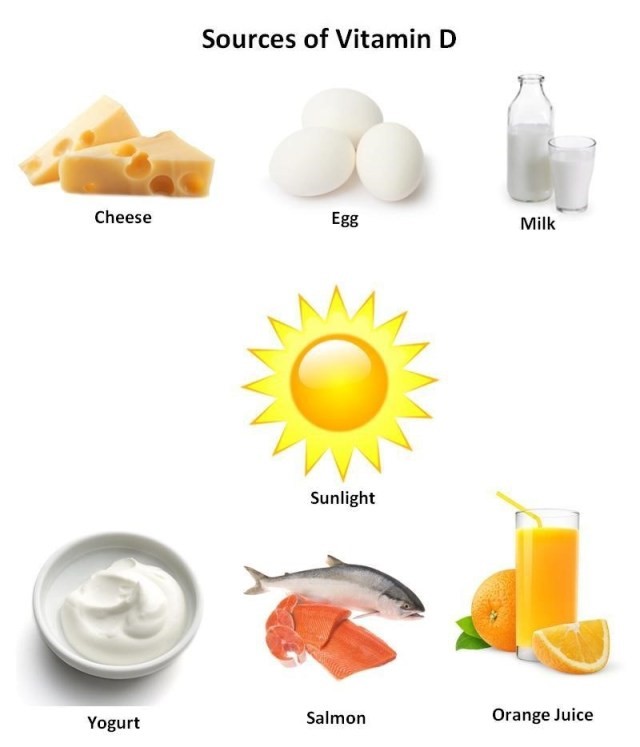
Thus, it is very important to consume calcium and vitamin D rich foods in order to take care of our bone and joint health. Since in most countries currently the ‘lockdown’ phase is still ongoing, thus if you notice that you may be suffer from not getting enough vitamin D, thus start consume vitamin D rich foods like the above. Read food labels and consume food that is fortified with vitamin D such as breakfast cereals and milk.
References
- Kristin L. Clarke. (2007). Nutritional Consideration in Joint Health. Vol 26. Issue 1 (1010-108). : https://doi.org/10.1016/j.csm.2006.11.006
- WebMd (n.d). Tips for Taking Care of your Joints. https://www.webmd.com/arthritis/caring-your-joints#1
- WebMd (n.d). Tips to Keep Joint Healthy. https://www.webmd.com/rheumatoid-arthritis/better-living-ra-17/active/slideshow-keep-joints-healthy
- Healthline (n.d). Is there are connection between Vitamin D and Joint Pain? https://www.healthline.com/health/vitamin-d-and-joint-pain
- Cleveland Clinic (2015). Osteoporosis Prevention with Calcium Treatmenthttps://my.clevelandclinic.org/health/articles/15049-osteoporosis-prevention-with-calcium-treatment

Workout Tips and Tricks!
You’ve been told a hundred times that exercise is good for you, and it’s true, but to maintain or do it every day is a problem, right? Here are five very good tips to rock out during your next workout.

Tip 1: Make exercise goals that you can achieve.
Many people find that having a firm goal in mind motivates them to move ahead. Goals are most useful when they are specific, realistic, and important to you. So maybe you can try to exercise on three weekdays and one weekend day for 30 minutes to start, but if you can only do less but slowly increase the duration, that’s okay too. The point is to get moving and keep moving. You can also start with mini workouts for only 5 minutes. After you get comfortable, challenge yourself by increasing the duration until your exercise lasts 30 minutes (1).
Tip 2: Get a partner to work out together so both of you can support each other.
There will be someone to help motivate you. Doing it with your exercise partner, however, makes it a lot easier. Men and women have different intensity levels. People put more effort into their workout routine when they’re exercising with someone else. So you must realise your partner cannot always keep up with you if your partner is of a different gender. What feels like a good workout to one of you might be too much or too little for the other. The same goes for healthy eating. The identical meal may not be acceptable to both of you. You may get advice on tips for healthy eating from a nutritionist (2). Fact! Men lose weight faster than women. It is due to the fact that they have more muscle mass and can burn 30 to 40 percent more calories during the same workout. You cannot compare your results with those of your partner. It’s not realistic to expect the same results in the same time period (3).

Tip 3: Don’t stick to only one place or one exercise.
Head outside. Do a variety of exercises so you don’t get bored. One of the simplest reasons for working out in a variety of places and doing different exercises is that it will be more fun. Going to the gym day after day can start to feel routine, and the last thing you want is to dread your workouts. Instead, get some fresh air with a walk, run, bike ride, or hike (2).
Tip 4: Play Some Music to Keep Your Energy Up.
Music could be just what you really need to motivate you to push further. Research has found that playing music while exercising increases the duration of workouts without a perceived increase in effort. This effect occurs because music boosts mood and encourages rhythmic movement. When a song has a strong, steady beat, for example, you can pedal or run to the beat of that music, which tends to feel satisfying and may inspire you to exercise more. While any type of music is beneficial, some research suggests faster music is more effective than slow music.
Choosing music that you enjoy and that fits your exercise routine can help you get more out of your exercise experience. Since everyone has a different ideal workout pace and intensity (4).

Tip 5:Work Out in the Morning and Get It out of the Way.
Some people find it easy if they do it in the morning, getting it out of the way before an excuse comes up to skip it. By the end of the day, you’re often really tired; random things have come up, and there’s always something else to do instead of exercise.
Morning workouts have been shown to lower nighttime blood pressure and improve sleep quality, and physical activity also improves focus and concentration, regardless of when you do it. But if you have trouble focusing during the day, a morning workout might be just the ticket. The most important thing is to find a routine, schedule, and workout routine that you can stick with (5).
References
-
WebMD (n.d). Setting Your Goals on Fitness. https://www.webmd.com/fitness-exercise/features/setting-goals-fitness#
-
Sadie Trombetta. (2016). 12 Reasons To Exercise With A Partner, Because Everyone Should Have A Gym Buddy. https://www.bustle.com/articles/156775-12-reasons-to-exercise-with-a-partner-because-everyone-should-have-a-gym-buddy
-
Cari Nierenberg. (2018). Yes, Men Lose Weight Faster Than Women, Here’s Why. https://www.livescience.com/63324-men-women-weight-loss-difference.html
-
National Center for Health Research (n.d). Can Listening to Music Improve Your Workout?. http://www.center4research.org/can-listening-music-improve-workout/
-
Kirsten Nunez (n.d). 13 Benefits of Working Out in the Morning. https://www.healthline.com/health/exercise-fitness/working-out-in-the-morning

Calcium Supplementation, Who Needs it?
Function of Calcium?
Body needs calcium for strong bones and teeth. Calcium is also required to carry out important function such as for muscle to move, for nerves system to carry messages between brain and body parts, for blood vessels to move blood throughout the body, and for body to help release hormones and enzyme that affect almost every function in the human body (1,2,3).
How much calcium is needed?
Normal adult need about 1000 mg of calcium daily, however there are certain condition which require to consume up to 1300 mg of calcium daily such as for pregnant lady, lactating mother, post-menopausal women, and man who is above 70 years old of age (1,2,4).
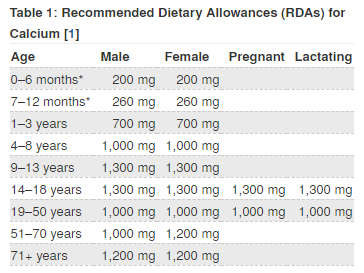
Calcium and diet
Body does not produce calcium, so it needs to be consumed from foods. Luckily, calcium can be found in variety of foods such as dairy products, dark leafy vegetables, fish, and many other fortified food products (1,2,3). As for our local food products sardine, anchovies, cencaluk, budu, tofu, tempeh, broccoli, kalian, and tapioca leaves are among food that is high with calcium (4).
It is also important to take note that in order to absorb calcium, body needs vitamin D. Only a few foods containing small amount of natural vitamin D, such as egg yolks and salmon with bones. Mostly, we rely on the exposure to sunlight in order to get enough vitamin D, of course in Malaysia the country with sun all year long have no problem with this! However, as currently we are still in the so to say the ‘lockdown’ phase thus it is very important to remind everyone to get the sunlight every day at least 20 minutes for its vitamin D and calcium absorption (1,2,4).
Though all the foods stated above are easily found, but there are conditions which hinder individuals from getting enough calcium from diet thus require it from calcium supplementation.

Condition for calcium supplementation
Before considering calcium supplement, individuals must understand how much calcium needs by the body (stated above). Then individuals must seek help from nutritionist, dietitian, pharmacist, or doctors, where they will assess your calcium consumption from your diet through diet recall. If the calcium intake falls short thus you need to top up calcium from supplement.
Hypertensive individuals and diet with large amounts of sodium.
Several literature reviews on topic of total calcium intake from food and supplements with regards to hypertension suggested that there is possible link to lowering high blood pressure. However, since most of the study design have small number of subjects, and were tested with people from different background, and not to mention possess various kind of biases thus making it difficult for scientist to draw conclusion (1,2).
However, a large study subject (Women’s Health Study), found out that calcium intake was inversely associated with risk of hypertension in middle-aged and older women, in terms of preventing hypertension (1,2).
The consumption of high sodium food lead to more calcium excretion through the urine, which will lead to constriction of blood vessels, which in the end resulting in high blood pressure. Drinking large water after consuming salty food, is not enough, as it may be making blood pressure return to its slightly normal condition, but it is not helping with the loss of calcium (1,2,5).
Pregnant and lactating mother
Often times, pregnant women is being reminded of how important is folic acid for the baby, even from the trying to conceive period, healthcare providers already advise them to consume folic acid, in order to prevent spina bifida to the baby. However, calcium is as well very important for mothers throughout pregnancy and lactating period especially for mother who is lack of calcium from diet (1).
Several professional organizations recommend calcium supplements during pregnancy for women with low calcium intakes to reduce the risk of preeclampsia (a condition where gestational hypertension always occur). For example, the American College of Obstetrics and Gynaecology (ACOG) states that daily supplementation with 1,500–2,000 mg calcium may reduce the severity of preeclampsia in pregnant women who have calcium intakes less than 600 mg/day. Similarly, the World Health Organization (WHO) recommends 1,500–2,000 mg calcium for pregnant women with low dietary calcium intakes, particularly those at higher risk of gestational hypertension (1).
As for normal healthy mother, the consumption of calcium is especially important during lactating period, mother may notice symptoms such as cramps which indicates lack of calcium during pregnancy and lactation period. Also if a mother is on iron supplementation as well, it is advisable to not consume both at the same time, it is best to gap several prior the consumption of these two since it can interfere with the absorption (1,2).

Post-menopausal women and elderly
Throughout the lifespan, bones are constantly being broken down and built up in a process known as remodelling. Bone cells called osteoblasts build bone, while other bone cells called osteoclasts break down bone if calcium is needed. In healthy individuals who get enough calcium and physical activity, bone production exceeds bone destruction up to about age 30. After that, destruction typically exceeds production. This is sometimes called “negative calcium balance,” which can lead to bone loss. Women tend to experience greater bone loss than men later in life due to menopause, a condition that lowers the amount of hormones that help to build and preserve bone (5).
Getting enough dietary calcium at all ages may help to slow the degree of bone loss, but calcium intakes at any level are not known to completely prevent bone loss. Calcium is less easily absorbed at later ages, and therefore eating a very high amount of calcium will not always resolve the problem (5).
Studies on calcium intake and bone density in postmenopausal women have mixed results that could be due to various reasons. Because the results of some large trials found that higher calcium intakes (usually achieved with a supplement) was associated with improved bone density and slightly lower risk of hip fractures, the RDA for calcium for postmenopausal women is higher than at younger ages. Some studies suggest that frail elderly (80 years and older living in institutions) may benefit from supplementation more than “younger” elderly who live independently in the community (5).

Individuals with lactose intolerance and limit dairy products
Individuals with lactose intolerance usually, is unable to consume food that has high amount of calcium especially if it come from milk and dairy source of food. Thus, lactose intolerance individuals need to consume it form dark leafy vegetables and soy-based product. However, in most cases the consumption is not enough or individuals with lactose intolerance consume not enough vegetable rich with calcium or other food source rich with calcium, thus for this specific population calcium supplementation is needed either from fortified food product such as ready to eat cereals or from calcium supplementation tablet itself.
Individuals receiving treatment on certain medication in the long period
Well, there are certain medication which can influence the absorption of calcium. Medication such as to treat osteoporosis (bisphosphonates), antibiotics (fluroquinolone), medication to treat low thyroid problem (levothyroxine), anticonvulsant (phenytoin), diuretic medication (Lasix and bumex), antacids containing aluminium and magnesium and also glucocorticoids (prednisone). These are all either causing calcium loss in the urine or cause calcium depletion in the bone. Thus, if you are on these medication, it is advisable to take calcium rich foods four hours prior or after the intake of medication, so that it would not interfere with the absorption of calcium, it is also best if you consume calcium supplementation if you do have poor intake of calcium rich food as well (2).
In conclusion, in all these conditions, calcium supplements may help you meet your calcium requirements. Talk with your doctor or dietitian about whether calcium supplements are right for you.
References
- National Institute of Health (NIH). Department of Health and Human Service. Calcium. Fact Sheet for Health Professionals. https://ods.od.nih.gov/factsheets/Calcium-HealthProfessional/ (Accessed on November 18, 2020).
- National Institute of Health (NIH). Department of Health and Human Service. Calcium. Fact Sheet for Consumers. https://ods.od.nih.gov/factsheets/Calcium-Consumer/ (Accessed on November 18, 2020).
- Mayo Clinic. Nutrition and Healthy Eating. Healthy Lifestyle. Calcium and calcium supplements: Achieving the right balance. https://www.mayoclinic.org/healthy-lifestyle/nutrition-and-healthy-eating/in-depth/calcium-supplements/art-20047097 (Accessed on November 18, 2020).
- Ministry of Health (MOH). National Coordinating Committee on Food and Nutrition. Recommended Nutrient Intake (RNI): A Report of the Technical Working Group on Nutritional Guidelines (2017).
- Harvard T.H. Chan. School of Public Health. The Nutrition Source. Calcium. https://www.hsph.harvard.edu/nutritionsource/calcium/ (Accessed on November 18, 2020).
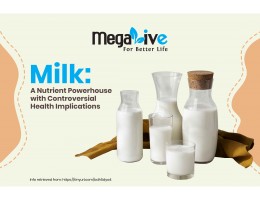
Milk: A Nutrient Powerhouse with Controversial Health Implications
Milk is renowned as a nutritional powerhouse, often considered the food with the highest nutrient density, making it a natural dietary staple for infants from ancient times. This association continues to hold true, as milk is the preferred oral nutrition supplement for bedridden patients (1).
Nonetheless, the role of milk in adult diets remains a topic of debate. Some studies argue that daily milk consumption is unnecessary, while others advocate for its regular inclusion (1). Here, we present a breakdown of the considerations to help you decide whether daily milk intake is right for you.

Milk and Obesity
Despite the common perception that full-fat dairy products contribute to weight gain, research has revealed a contrary perspective. In fact, full-fat dairy products might be more effective in weight management than their low-fat counterparts. Walter Willet, a nutrition expert from Harvard School of Public Health, clarifies that the demonization of all fats emerged in the 1950s and 1960s when saturated fats were linked to high cholesterol and increased heart disease risk (2).
However, reducing saturated fat in food products or diets often leads to their replacement with sugars or carbohydrates. The downside to this substitution is that carbohydrates do not provide the same feeling of fullness as fats, causing increased food consumption (2). Some studies even suggest that the more sugar we consume, the stronger our cravings become, akin to an addiction (3).
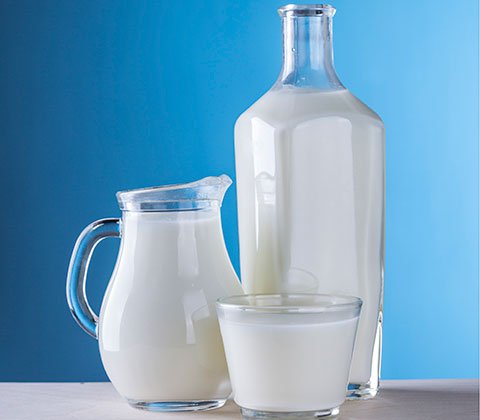
Modern Milk Dilemma
Modern milk options have evolved to cater to various preferences and dietary needs, from animal-based milk to plant-based alternatives. The variety of choices makes selecting the right milk a bit tricky, especially given the differing nutritional profiles.
Choosing the Right Milk
If your goal is to use milk to promote a sense of fullness and avoid excessive food intake, full cream milk is a suitable choice. However, be mindful of monitoring your overall calorie intake and opt for milk with lower sugar content. On the other hand, if you tend to obtain fats from other food sources, opting for low-fat milk is advisable while remaining vigilant about sugar content. In essence, prioritize milk with minimal sugar, saturated fat, and trans-fat content, as these components have been associated with various health complications.
Plant-based milk alternatives may not necessarily be healthier than cow's milk, as they could contain higher sugar levels. However, they are an environmentally friendly choice, with soy milk, almond milk, oat milk, and rice milk producing fewer carbon emissions and greenhouse gases compared to cow's milk.
Pros and Cons of Milk
The decision of whether to incorporate milk into your daily diet remains a subject of debate. Factors such as your dietary intake and body weight play a pivotal role in determining the daily milk consumption that suits you. For individuals with normal weight, one glass of milk per day may suffice, while those who are underweight might consider upping their intake to two glasses. Yet, it is essential to balance the intake of beneficial fats from milk with the reduction of harmful fats from sources such as deep-fried foods, foods high in trans-fats, and those with high saturated fat content.
In Malaysia, where a significant portion of the population is overweight or obese, reconsidering daily milk consumption may be prudent. The key is to ensure you meet your daily calcium requirements, which can also be obtained from alternative sources like anchovies, sardines, almonds, kale, and various other foods (5,6).

Fact Check (5,6)
-
Saturated fat is often high in animal-based and certain plant-based foods, such as coconut milk (santan). Excessive intake is linked to elevated blood cholesterol levels and an increased risk of heart disease. Notably, many coconut milk products claim to be cholesterol-free, despite containing high levels of saturated fat.
-
Trans fat is a man-made fat produced through hydrogenation, which raises bad (LDL) cholesterol and lowers good (HDL) cholesterol levels. Consuming trans fats increases the risk of heart disease, stroke, and type 2 diabetes. Examples of foods that may contain trans fats include doughnuts, cookies, crackers, muffins, pies, fast food, and cakes.

References
- Ask the Experts: Is Milk is good for you? https://www.healthline.com/health/food-nutrition/experts-is-milk-good-for-you (Accessed on November 23, 2020).
- Harvard T.H. Chan School Public Health. Calcium and Milk. https://www.hsph.harvard.edu/nutritionsource/what-should-you-eat/calcium-and-milk/ (Accessed on November 24, 2020).
- Avena, N. M., Rada, P., & Hoebel, B. G. (2008). Evidence for sugar addiction: behavioral and neurochemical effects of intermittent, excessive sugar intake. Neuroscience and biobehavioral reviews, 32(1), 20–39. https://doi.org/10.1016/j.neubiorev.2007.04.019
- Harvard T.H. Chan School of Public Health. Milk not necessary for adult, should be good option for kids. https://www.hsph.harvard.edu/news/hsph-in-the-news/milk-health-adults-kids/ (Accessed on November 20, 2020)
- Ministry of Health (MOH). Fats and cholesterol. http://www.myhealth.gov.my/en/dietary-for-hypercholesterolemia/ (Accessed on November 23, 2020).
- American Heart Association (AHA). Trans Fat. https://www.heart.org/en/healthy-living/healthy-eating/eat-smart/fats/trans-fat (Accessed on November 24, 2020).

Gout: What you need to know?
Normally, uric acid dissolves in the blood and passes through kidneys and excreted in urine. But when there is too much uric acid in the body, uric acid crystals (monosodium urate) will build up in joints, fluids, and tissues within the body. The build up will become sharp needle like crystal compound in joint or in the surrounding tissue that will cause pain, inflammation and swelling in the affected joint area.
Sometimes hyperuricemia does not cause gout, which also refer to as asymptomatic hyperuricemia. This condition does not need to be treated but efforts should be made to lower the uric acid levels by encourage individuals to make changes in their diet or lifestyle.
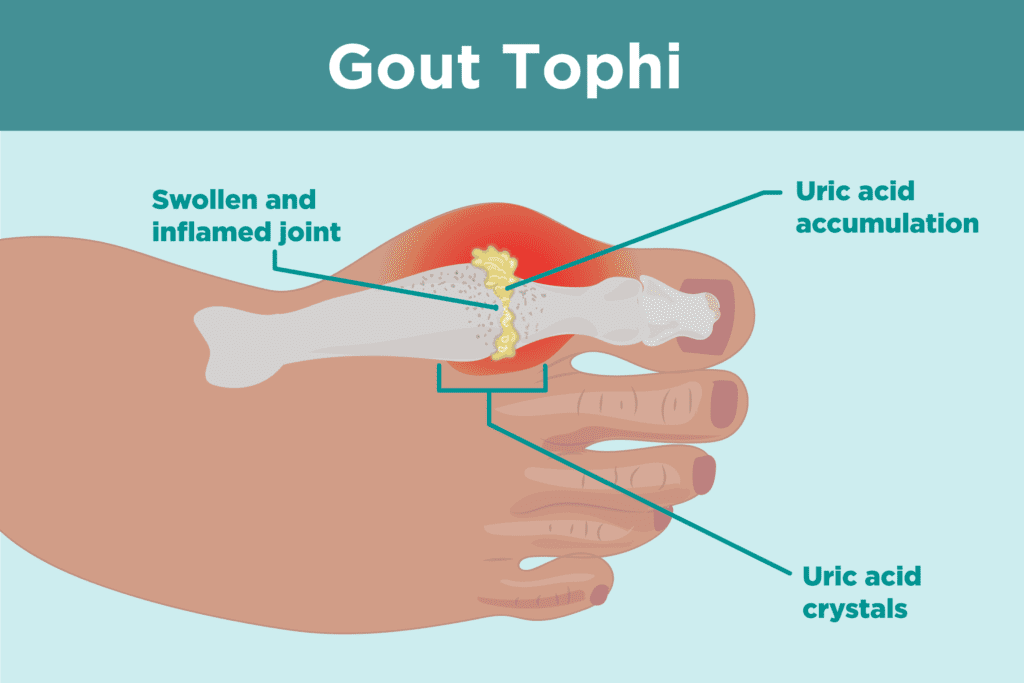
What are the sign and symptoms for gout? (1,4)
Sign and symptoms for gout occur when there is appearance of inflammation and swelling in the joint are, this condition usually refers to as acute gout attack. Usually during this condition symptoms below can be seen:
Intense joint pain. Usually it affects the large joint in the big toe area, but it can occur in any joint. Other commonly affected joints include the ankles, knees, elbows, wrists, and fingers. The pain is likely to be most severe within the first 4 to 12 hours after its presence.
Lingering discomfort. After the most severe pain subsides, some joint discomfort may last from a few days to a few weeks.
Inflammation and redness. The affected joint or joints become swollen, tender, warm and red.
Limited range of motion. As gout progresses, individuals may not be able to move joints normally, as it will becoming stiff.
For gout there will be times when symptoms get worse, known as flares, and times when there are no symptoms at all, known as remission. Repeated attack of gout can lead to gouty arthritis, a worsening form of arthritis.
What are the risk factors for gout (5)?
There are factors which makes individuals are more susceptible to gout as compared to others:
- Male
- Being Obese

- Have certain health condition such as hypertension, diabetes, and poor kidney function
- Using certain medication such as diuretic pills
- Excessive drinking of alcohol
- Frequently have diet that is high with purine
How gout is diagnosed? (1,5)
Doctor usually diagnose gout based a review of your medical history, physical examination, and the symptoms. However, as for gout as people in Malaysia rarely do blood test thus the only time, they found out that they have gout is when their big toe is already at stake. Usually when you meet doctor with presence of tophi or podagra, the doctor usually will manage or treat the condition as gout until proven otherwise. Doctor will usually further confirm this via X-ray to see if there is any stone, or through your blood result where your uric acid level will be measure. Sometimes doctor can also take fluid sample from your joint to confirm whether it contains uric acid (4).
How gout is treated? (1,5)
Gout is usually treated by managing the pain of flare. Treatment of flare consists of non-steroidal anti-inflammatory (NSAID), like ibuprofen, steroids, and the anti – inflammatory drug colchicine.
However as to prevent from the future flare, changes in lifestyles is a must. Losing weight, eat less purine-rich food (like red meat or organ meat), limit alcohol consumption, and drinking plenty of water will help to prevent future attack.
In order to prevent gout from happening, it is none other than to live a healthy lifestyle, eat diet in balance, variety, and moderation manner. Exercise frequently. Always make sure your weight is in the healthy range of weight for your height and frequently conduct medical check up to see if there is any changes in your blood result as our age increases.
References
- Centre of Disease Control (CDC). Gout. https://www.cdc.gov/arthritis/basics/gout.html (Accessed on November 26, 2020).
- What is gout? https://www.webmd.com/arthritis/arthritis-gout (Accessed on November 26, 2020).
- American Family Physician Foundation (AAFP). Gout and Hyperuricemia. https://www.aafp.org/afp/1999/0215/p925.html#:~:text=The%20peak%20incidence%20occurs%20in,changes%20in%20diet%20or%20lifestyle. (Accessed on November 26, 2020).
- Mayo Clinic. Gout. https://www.mayoclinic.org/diseases-conditions/gout/symptoms-causes/syc-20372897 (Accessed on November 26, 2020).
- Clinical Practice Guideline (CPG). Gout. Ministry of Health Malaysia (MOH).

Low Purine Diet 101
These two prescription usually will be accompanied with pain killer to ease the pain. Depending on severity, condition, and individuals’ level of uric acid, the acute attack will slowly resolve in few days or week. However, if individuals fail to be cautious on food that they consume, gout may attack again (1,5). So here in this article, we are going to explain on diet that is suitable for individual with gout. Some said that it can be used for people who have kidney stone as well, but it is best to seek medical advise on what kind of stone itself, such as sometimes it can be calcium stone, oxalate stone, and many more thus avoidance of food must be made according to what kind of stone in the individuals body. Again, in this article we focus on gout.
Purine is found on many types of food, the only different is the amount of purine in a particular food. Certain food has high amount of purine while the other have low amount of purine. Food that is high in purine is the kind of food that has to be avoided by individuals with gout since it will be broken down into uric acid which for individual with gout it will be a huge problem (1,5,3).

Carbohydrate
Most carbohydrate does not have high amount of purine; thus, it is okay for individual to consume carbohydrate within recommended intake. However, as for people who have gout and diabetic, it is very tricky since wholegrain product has high amount of purine but has low glycemic index and high fiber, which is meant for individuals with diabetes but not gout, thus for individual with both problems, they need to balance in the amount of carbohydrates taken from these two source, meaning to say, let’s take rice as an example, certain days individual has to consume white rice while other days it can be brown rice. The same thing works for bread and pasta etc (carbohydrate-based food) (2,3,6).
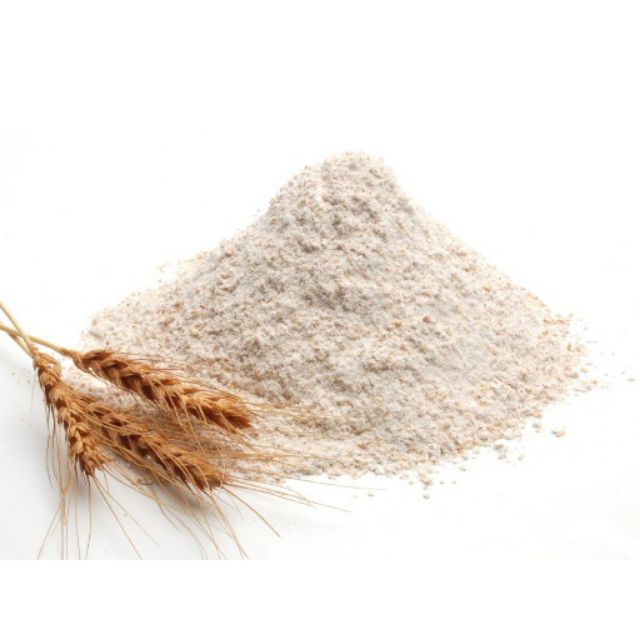
Protein
Most of gout individuals must be cautious when it comes to protein-based food. Fish such as anchovies, sardines, scallops, tuna, codfish, herring, and haddock has high level of purine thus need to be avoided. Meat such as from goose and duck and organ meat such as brain, heart, liver, and kidney also have high amount of purine thus must be avoided or limit it intake. Gravies that is made from meat, like red meat broth or soup or stocks also has high purine (2,4,6).
For individual with gout, protein rich food can be consumed from source such as chicken, lean meat, and prawn. However, the consumption of meat also must be limited to 2-3 ounces only per day. For individuals with gout it is best to consume protein from legumes and eggs since most of it does not has high purine, but for individuals with gout and high cholesterol level consumption of eggs need to be limit as well. If for normal and gout individual consumption of egg is up to two eggs per day while for gout and high cholesterol need to limit to one only or better do not consume egg yolk for it can elevate your cholesterol level. You sure don’t want your cholesterol level rising while managing your uric acid level, don’t you ?

Vegetables and fruits
Most of the vegetables and fruits has low amount of purine except for asparagus, cauliflower, spinach, and mushroom. Thus, individuals with gout may consume vegetable without concern that it may elevate level of uric acid in the blood. As for individuals who has diabetes and gout, consuming a lot of vegetables also will help in the management of blood glucose level as well, but you need to consume fruits that has low glycemic index such as apple, strawberry, kiwi, and peach (2,3,7).

Milk and dairy products
Milk and dairy products are mostly low in purine. However, in consuming milk and dairy products, individuals need to be aware on the amount of fat they are ingesting. It is also not suitable for individual who has high cholesterol. Thus, always choose milk and dairy product that is low trans-fat, low saturated fat, and low sugar (2,3,7).
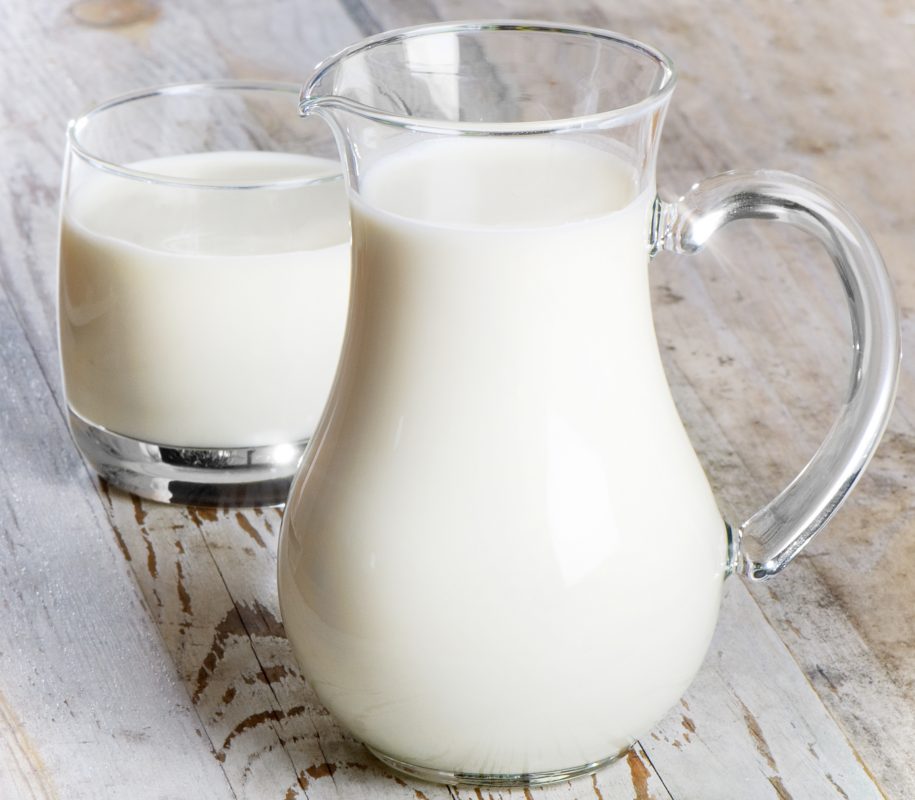
In conclusion,
Other than category of food mentioned above or in the picture above, alcohol consumption also must be taking in cautious, for gout individuals, wine is better than beer. And, if you are considering supplementation consumption, it is best to avoid supplement that contained yeast. Consumption of low purine diet also must be together with drinking plenty of water and exercise which can help you to maintain or lose weight, which is one of the risks for gout (2,3,6). You may follow the low purine diet table below to understand diet for gout individuals better!

References
- 7 Tips following a low-purine diet. https://www.healthline.com/health/tips-for-following-low-purine-diet (Accessed on December 1, 2020).
- com. Low Purine Diet. https://www.drugs.com/cg/low-purine-diet.html (Accessed on December 1, 2020).
- Mayo Clinic. Gout: What’s allowed what’s not. https://www.mayoclinic.org/healthy-lifestyle/nutrition-and-healthy-eating/in-depth/gout-diet/art-20048524 (Accessed on December 1, 2020).
- sg. Gout Diet: Top Carbohydrate, Dairy, Fruits, and Vegetables to eat. https://www.healthxchange.sg/food-nutrition/food-tips/gout-diet-carbohydrate-dairy-fruit-vegetable (Accessed on December 1, 2020).
- My Health Portal. Ministry of Health Malaysia (MOH). Gout. http://www.myhealth.gov.my/en/gout-5/ (Accessed on December 1, 2020).
- My Health Portal. Ministry of Health Malaysia (MOH). Diet Management for Gout. http://www.myhealth.gov.my/en/diet-management-for-gout/ (Accessed on December 1, 2020).
- Clinical Practice Guideline (CPG). Ministry of Health Malaysia (MOH). Gout.
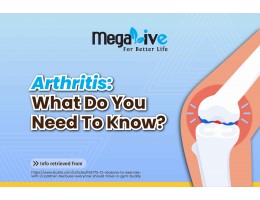
Arthritis: what do you need to know?
Arthritis is not a single disease; it refers to joint pain or joint diseases. There are more than 100 types of arthritis and related conditions. It can be due to various reasons and require different kinds of treatment. Arthritis is more common among women, and it can affect just anyone, but more frequently older and overweight or obese individuals. The two most common types of arthritis are osteoarthritis and rheumatoid arthritis (1, 2).
Osteoarthritis causes cartilage (the tissue that covers the bone end) to break down. While rheumatoid arthritis attacks the joint, beginning with the joint lining. Another condition that often occurs in individuals of younger age, unlike osteoarthritis and rheumatoid arthritis, is gout. The condition occurs when uric acid crystals form from too much uric acid in the blood (1, 2).
Symptoms of arthritis?
The symptoms of arthritis usually develop over time, but they may also appear suddenly. Common arthritis joint symptoms include swelling, pain, stiffness, redness, and decreased range of motion. Symptoms may come and go. They can be mild, moderate, or severe, but most often they are reported to be severe in the morning. The pain may stay about the same for years but can progress or get worse over time. Severe arthritis can result in chronic pain, an inability to do daily activities, and the inability to walk or climb stairs (2, 3).
Arthritis can also cause permanent joint changes. These changes may be visible, such as knobby finger joints, but often the damage can only be seen on an X-ray. Some types of arthritis also affect the heart, eyes, lungs, kidneys, and skin, as well as the joints (2, 3).

What causes arthritis?
There are many causes of arthritis, and different types of arthritis have different causes. As an example, osteoarthritis (OA) occurs due to normal wear and tear, but an infection or injury to the joints can exacerbate this natural breakdown of cartilage tissue. Also, if you have a family history of OA, your risk of developing it is higher (2, 3).
While rheumatoid arthritis (RA) occurs when your body’s immune system attacks the tissues of the body, These attacks affect the synovium (a soft tissue in joints that functions to nourish cartilage and lubricate joints). RA is the kind of disease that invades and destroys joints. It can eventually lead to the destruction of both bone and cartilage inside the joint. The exact cause of the immune system’s attacks is unknown. But scientists have discovered genetic markers that increase your risk of developing RA nowadays (2, 3).

What to do?
When it comes to pain, if you notice some changes in your body, it is important for you to seek help so that you can get an accurate diagnosis. The earlier you seek help, the better. So talk to your doctor about your symptoms. You may be referred to a rheumatologist, orthopaedic surgeon, or other doctor who specialises in arthritis and related conditions. There are many things that can be done to preserve joint function, improve mobility, and improve quality of life. Learning about the options available for treatment will give you a higher chance of finding the best solution that fits you (3, 4).
However, apart from learning the best solution for your joint pain, it is also best if you try to reduce your weight if you are obese or overweight. Try to maintain weight since weight has some impact on joints, regardless of where the joint is. By maintaining weight, you will start putting nutritious foods in your body that can reduce inflammation in your joints. The main goals when you have arthritis are to reduce symptoms and improve your quality of life (3, 4).
References
- Mayo Clinic. Arthritis. https://www.mayoclinic.org/diseases-conditions/arthritis/symptoms-causes/syc-20350772#:~:text=Arthritis%20is%20the%20swelling%20and,are%20osteoarthritis%20and%20rheumatoid%20arthritis. (Accessed on December 4, 2020).
- Arthritis. https://www.healthline.com/health/arthritis (Accessed on December 4, 2020).
- Arthritis Foundation. What is arthritis? https://www.arthritis.org/health-wellness/about-arthritis/understanding-arthritis/what-is-arthritis (Accessed on December 4, 2020).
- Arthritis. https://www.webmd.com/arthritis/default.htm (Accessed on December 4, 2020).

Collagen: What You Need to Know
The word collagen comes from the Greek word "kola,” which means glue, and that is basically the function of collagen, which is to hold protein and/or non-protein substances together. As an example, in the skin, the function of collagen is to hold all the skin structure together. Collagen is one of the major building blocks for many parts of the body, including bones, skin, tendons, and ligaments. It accounts for about one-third of the body's protein composition. It is also found in many other body parts, including blood vessels, corneas, and teeth.
Types of collagen
There are various types of collagen, but the main types are type I, type II, type III, and type IV.
Type I: Most of your body’s collagen is made of type I. It is a densely packed fibre that provides structure to skin, bones, tendons, fibrous cartilage, connective tissue, and teeth.
Type II: This type is made of more loosely packed fibres and is found in elastic cartilage, which cushions the joints.
Type III: This type supports the structure of muscles, organs, and arteries.
Type IV: This type helps with filtration and is found in the layers of your skin.

Collagen in Skin: Do We Need It?
Our body can produce its own collagen; however, the production of collagen gradually declined as we aged, which explains that among the signs of ageing are wrinkles, which come from skin that is less elastic, less supple, and unfirm.
Researchers also revealed that women lose collagen faster than men, causing women’s skin to age faster than men. Apart from gender, nutrition, and recreational drugs, environmental stress such as sun exposure, exposure to toxins such as pollutants, and cigarette smoke can also affect the level of collagen in the body.

Where can we get collagen from?
The good news is that collagen can be gotten from food. There are foods that can stimulate the production of collagen and break down collagen. The body makes collagen by combining proline and glycine (types of proteins). Thus, consuming foods high in proline and glycine will help restore collagen levels in the body.
According to Dr. Bradley from the Cleveland Clinic, your body cannot make them if it doesn’t have them, which means all the nutrients, such as glycine and proline, are essential to produce collagen, but if we do not acquire them from our diet, then our body might not be able to produce collagen. Foods that are high in collagen are mostly derived from protein-rich foods such as bone broth, pork, chicken, beef, eggs, and fish. Plant-based foods also have added benefits to collagen-rich food consumption since vegetables and fruits contain high levels of antioxidants that can protect against reducing collagen. Types of foods that can break down collagen are sugary foods and refined carbs.
As for supplements containing collagen, they are usually in the form of hydrolyzed collagen. The source of hydrolyzed collagen can be fish, marine seaweed, pork skin, or other food sources that have high collagen contents. It is also said that hydrolyzed collagen is much easier to absorb by the body as compared to collagen from food.
To date, studies that report whether consumption of collagen has benefits to skin, joint health, muscle mass, bone, and many more are inconsistent. It depends on various factors such as the source of collagen, the bioavailability of collagen, the frequency of consuming it, the severity of a skin condition or joint condition previously, and many more. Thus, it is advisable for individuals to check the supplement ingredients prior to consuming any kind of supplement.
Individuals with cyst problems and cancer problems must be careful with their consumption of collagen supplements, as they can be harmful. Hence, it is best to seek professional help before consuming any supplement. Certain supplements are contraindicated with the medicine that you are consuming, etc.
References
- Top 6 Benefits of Taking Collagen Supplement. https://www.healthline.com/nutrition/collagen-benefits#_noHeaderPrefixedContent (Accessed on December 29, 2020)
- (n.d). Collagen, what is it and what it is good for? https://www.healthline.com/nutrition/collagen (Accessed on December 29, 2020).
- Atikah Khalim (2015). Ministry of Health Malaysia (MOH). My Health Portal. Collagen. http://www.myhealth.gov.my/en/collagen/
- Fadzilah kahar (2015). Ministry of Health Malaysia (MOH). My Health Portal Collagen and its source. http://www.myhealth.gov.my/kolagen-dan-sumbernya/
- Cleveland Clinic. The best way you can get more collagen. https://health.clevelandclinic.org/the-best-way-you-can-get-more-collagen/ (Accessed on December 29, 2020).
- What is collagen.
https://www.livescience.com/collagen.html#:~:text=Collagen%20refers%20to%20a%20family,in%20the%20body%20by%20mass(Accessed on December 29, 2020).

Benefits of Fish Oil Supplementation
Consumption of fish is important as it is a good source of protein. It is recommended to consume one fish per day, according to the Malaysian food pyramid. This is because the consumption of fish in Malaysia is rarely equated with a risk of contamination with mercury, etc., unlike in western countries. This might be due to the types of fish and sizes of fish that we are consuming here as compared to other parts of the world. It is said that the bigger the fish, the more contamination it has; hence, there is a recommendation for pregnant mothers to consume small fish rather than big fish to avoid the risk of contamination.
Research on the benefits of fish oil supplementation also varies greatly, which is why in this article we are going to list out who might need a fish oil supplementation in their daily lives!
The benefits of ingesting fish oil can differ significantly between studies. A study found a connection between these omega-3 fatty acids and mental health disorders and that EPA and DHA can speed up brain development even in young children. Additionally, studies have demonstrated that it can help treat cardiovascular diseases, joint pain, and eczema. The question is, is it true that all of these effects can be obtained from fish oil consumption? (1)

Individual with mental health problems/disorders
In three lengthy studies spanning the years 1988 to 2008, researchers looked at the relationship between fatty acid intake and suicide risk among more than 205 000 participants. They discovered no proof that eating fish or fatty acids reduced the risk of suicide. "The vast majority of earlier research on whether fatty acid intake has any positive effects on mental health has been based on results from depression screening. The only time this relationship has been studied with concrete data on suicide mortality is in our study, which is also the largest of its kind.” (2)
While a study found that eating a balanced diet and exercising regularly are better for brain health than taking fish oil or omega-3 fatty acid supplements, A study of 3073 elderly people at risk of macular degeneration, an age-related cause of vision loss, found little benefit from omega-3 supplements on memory. Omega 3 supplements or a placebo were given to study participants at random for a five-year period. According to the researcher, a healthy diet cannot be replaced by a supplement; therefore, if you eat a healthy diet rich in fruits, vegetables, and marine fish, you probably don't need to take a fish oil supplement. According to this study, the overall dietary pattern is more important than a single nutrient (2).
Individuals with cardiovascular disease
Recently, there have been many studies suggesting that Omega 3 will not lower the risk of heart problems. To answer this, Dariush Mozaffarian, cardiologist from Harvard Medical School, said that he gathered 20 previous studies involving more than 68, 000 patients since 1989 and found that, overall, fish oil supplements did neither harm nor good since they did not significantly reduce people’s risk of mortality, cardiac death, heart attack, or stroke. But according to him, the research link between fish oil supplementation and heart problems is rather complex since it does not only take fish oil to shield the heart from various problems and diseases; it also takes weight status, exercise frequency, cigarette or substance use, and many more (3,4,5).

Which is why, interpreting the study, we would still recommend customers and patients consume more fish as a first-line measure. But if you do not like fish, or you feel like your consumption of fish is not enough, or you simply want to be sure that your body is getting omega 3, there is no harm in taking fish oil; it will certainly help with the essential nutrient, since omega 3 is a nutrient that your body cannot produce and can only get from diet (3,4,5).
Individuals with skin problem
A systematic review for the treatment of atopic dermatitis or eczema using fish oil supplementation is very scarce; the studies available are all small-sample studies. Not only are these three studies small, but they are also described as poor methodological studies by the reviewer, as they have many confounding factors. However, the outcomes of these studies show positive outcomes for eczema and overall daily living as compared to placebo (6, 7).
Another convincing relationship between consumption of fish oil and skin health is that in a study where pregnant women were given fish oil during pregnancy and followed up for 6 years, it was found that consumption of fish oil during pregnancy led to a positive skin health outcome for babies skin. The study also concluded that maternal supplementation with fish oil might have prophylactic potential for long-term prevention of asthma in offspring (6, 7).

In conclusion, consumption of fish oil has mixed results in studies depending on what kind of problem we are looking to solve with fish oil. Since there are various factors influencing a particular health problem, There is no magic pill in this world, honey! You need to, however, eat healthily, consume a lot of vegetables and fruits, and exercise, but if you think that you do not get enough omega 3 from your diet because you dislike fish, are afraid to consume fish regularly due to contamination, etc., or simply would like to make sure that your body has enough omega 3, then there is no harm in taking fish oil supplementation. It's just that in order to make sure you get the right omega 3 for your body, buy it from a pharmacy, make sure the product has a Ministry of Health (MOH) notification number, and simply ask a healthcare professional which omega 3 supplementation suits you, simply for the dosage and perhaps current medication that you are on, and you are good to go!
References
-
Harvard T.H Chan. School of Public Health. Fish: Friend or Foe? https://www.hsph.harvard.edu/nutritionsource/fish/
-
Harvard T.H. Chan. School of Public Health. No mental health benefit from fish oil. https://www.hsph.harvard.edu/news/hsph-in-the-news/no-mental-health-benefit-from-fish-oil/\
-
Harvard T.H. Chan. School of Public Health. https://www.hsph.harvard.edu/news/hsph-in-the-news/fish-stroke-risk-mozaffarian/
-
Harvard T.H Chan. School of Public Health. Major Meta Analysis in Clinical Trial Omega 3 Supplemeny link with lower risk of CVD. https://www.hsph.harvard.edu/news/press-releases/in-major-meta-analysis-of-clinical-trials-omega-3-fish-oil-supplements-linked-with-lower-cardiovascular-disease-risk/
-
Harvard T.H. Chan. School of Public Health. Fish Oil Supplementation and Heart Health. https://www.hsph.harvard.edu/news/hsph-in-the-news/mozaffarian-fish-oil-supplements-heart-health/
-
Schlichte, M. J., Vandersall, A., & Katta, R. (2016). Diet and eczema: a review of dietary supplements for the treatment of atopic dermatitis. Dermatology practical & conceptual, 6(3), 23–29. https://doi.org/10.5826/dpc.0603a06
-
Huang, T. H., Wang, P. W., Yang, S. C., Chou, W. L., & Fang, J. Y. (2018). Cosmetic and Therapeutic Applications of Fish Oil’s Fatty Acids on the Skin. Marine drugs, 16(8), 256. https://doi.org/10.3390/md16080256

Should you consider collagen supplementation?
Collagen is a fibre-like structure that is used to make connective tissue, which connects other tissues together. It is a major component of bone, skin, muscles, tendons, and cartilage. Collagen is a component that helps make tissue strong, resilient, and able to withstand stretching (1).
Although the saying that our bodies make less collagen as we age is true, the production of collagen drops most not only because of this but also due to excessive exposure to the sun, smoking, including secondhand smoke, excessive consumption of alcohol, lack of sleep, and lack of exercise. As the collagen levels in our skin diminish, the deep skin layers change from a tightly organised network of fibres to an unorganised maze. Environmental exposure to the skin, such as harsh weather, can also damage collagen fibres by reducing their thickness and strength, which can lead to wrinkles on the skin surface (1).

Research on collagen supplementation focuses mostly on joint and skin health. Although studies pertaining to this using human subjects are still lacking, some randomized controlled trials have found that collagen supplementation improves skin elasticity. In one study, women who took a supplement containing 2.5–5 grammes of collagen for 8 weeks experienced less skin dryness and a significant increase in skin elasticity as compared to those who did not. Another study found that women who consumed it for 12 weeks experienced increased skin hydration and a significant reduction in wrinkle depth as compared with a control group (1, 2, 3, 4).
Trials on collagen supplements and joint health also found that they can improve joint mobility and decrease joint pain in people with osteoarthritis or in athletes (5). Collagen comprises about 60% of cartilage, a very firm tissue that surrounds bones and cushions them from the shock of high-impact movements, so a breakdown in collagen could lead to a loss of cartilage and joint problems.

Other than the consumption of collagen-based supplements, there are also foods that are rich in collagen or that encourage collagen production other than the lifestyle modifications mentioned above. foods such as tough cuts of meat full of connective tissue like pot roast, brisket, and chuck steak. However, a high intake of red meat is not recommended as part of a long-term healthy diet. Collagen is also found in the bones and skin of freshwater and saltwater fish. Bone broth, which requires animal bones to simmer in water with a small amount of vinegar for 4–24 hours, is also said to have high collagen properties. However, the amount of amino acids will vary among batches depending on the types of bones used, the cooking period, and many other factors. Other foods that can help with the production of collagen are foods that are rich in zinc, such as legumes, nuts, seeds, whole grains, and vitamin C-rich foods, such as citrus fruits, bell peppers, and tomatoes.

Although studies on the effectiveness of collagen for health are still lacking, many available studies have not shown negative side effects in individuals given collagen supplements (6). Thus, it is worth trying for its said benefits, especially if the benefits are your health concerns! But be sure to talk to your healthcare professionals about this based on your medication intake and your health issues before consuming any health supplement.
References
- Harvard T.H. Chan. School of Public Health. Collagen.https://www.hsph.harvard.edu/nutritionsource/collagen/
- Healthline. Top 6 Benefits of Taking Collagen Supplements. https://www.healthline.com/nutrition/collagen-benefits
- Proksch E, Segger D, Degwert J, Schunck M, Zague V, Oesser S. Oral supplementation of specific collagen peptides has beneficial effects on human skin physiology: a double-blind, placebo-controlled study. Skin Pharmacol Physiol. 2014;27(1):47-55. doi: 10.1159/000351376. Epub 2013 Aug 14. PMID: 23949208.https://pubmed.ncbi.nlm.nih.gov/23949208/
- Borumand, M., & Sibilla, S. (2015). Effects of a nutritional supplement containing collagen peptides on skin elasticity, hydration and wrinkles. Journal of Medical Nutrition and Nutraceuticals, 4(1), 47.https://www.jmnn.org/article.asp?aulast=Borumand&epage=53&issn=2278-1870&issue=1&spage=47&volume=4&year=2015
- Bello AE, Oesser S. Collagen hydrolysate for the treatment of osteoarthritis and other joint disorders: a review of the literature. Current medical research and opinion. 2006 Nov 1;22(11):2221-32.
- Kim DU, Chung HC, Choi J, Sakai Y, Lee BY. Oral intake of low-molecular-weight collagen peptide improves hydration, elasticity, and wrinkling in human skin: a randomized, double-blind, placebo-controlled study. Nutrients. 2018 Jul;10(7):826.

How to improve your blood circulation ?
Individuals with poor blood
circulation typically experience numbness and coldness in their extremities,
particularly their hands and feet. It is often the result of an underlying
condition to a more serious condition, such as uncontrolled diabetes or low
blood pressure, but it can also be the result of poor posture, among other
things.
Here are some tips on how to
improve your blood circulation:
1. Go on regular walks
Walking can improve blood
circulation. Contraction of the calf muscle causes venous blood to be pushed
back up to the heart. The arteries dilate when patients walk and improve blood
flow throughout the body. Aim for a minimum of 30 minutes of walking three
times per week.
2.
Reduce your weight
Being obese or overweight poses a
greater health risk to your circulatory system because it increases your risk
of hypertension, high cholesterol, and diabetes, all of which lead to blood
circulatory problems.
Consumption of food in moderation,
balance and exercise regularly can help to prevent being obese and overweight.
3.
Take more breaks at work
Taking more work breaks allows you
to develop the habit of alternately sitting, standing, and walking. This
reduces the demand on the circulatory system because sitting causes blood flow
to slow and pool in your legs, resulting in muscle pain and fatigue. Thus,
taking more breaks while working in an office is beneficial for improving blood
flow and keeping your stress level in check.
Try to stretch every 15 to 20
minutes and get up and move every hour—even if it's just a power walk around
your house.
4. Stay hydrated
When your body is dehydrated, it affects the amount of blood that
circulates through it. It also causes your blood to retain more sodium, causing
it to thicken and making it much more difficult for your circulatory system to
function properly.
Checking your pee is the simplest
way to ensure that you are getting enough fluid. A yellow light or clear urine
indicates that you are drinking enough water; anything darker indicates that
you need to up your water intake game!
5. Manage your blood pressure
High blood pressure causes your blood circulation to go haywire,
putting more strain on your heart and blood vessels. If you do not manage your
blood pressure properly, the heart and circulatory system will have to work
harder to supply blood flow throughout the body.
High blood sugar levels can harm
the lining of small blood vessels, causing blood circulation issues. This
condition will also encourage the formation of plaque in your blood vessels,
further complicating matters.
Exercise, limiting sodium intake,
reducing stress, getting enough sleep, and making changes to your lifestyle can
all help to lower your blood pressure and improve your circulation. Ideally,
your blood pressure should be less than 120/80 mmHg.
6. Elevate your legs
Elevating your legs relieves
pressure on your veins because the blood does not have to work against gravity
to return to the heart.
When you are watching TV or taking
a nap, the most convenient time to elevate your legs is when you are lying down
and prop your legs above your heart level for 15 minutes or more at a time.
This will greatly improve overall blood circulation.
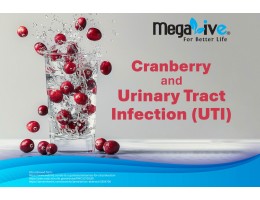
Cranberry and Urinary Tract Infection (UTIs)
Cranberry and Urinary Tract Infection (UTIs)
Urinary Tract Infection (UTIs) is a condition that happen when bacteria, often from the skin or rectum, enter the urethra and infect the urinary tract. Typical symptoms of UTI include painful and frequent urination, feeling the urge to urinate despite having an empty bladder, blood in urine, and lower abdominal pain.
Among women who get UTIs, the chances of it returning are common.
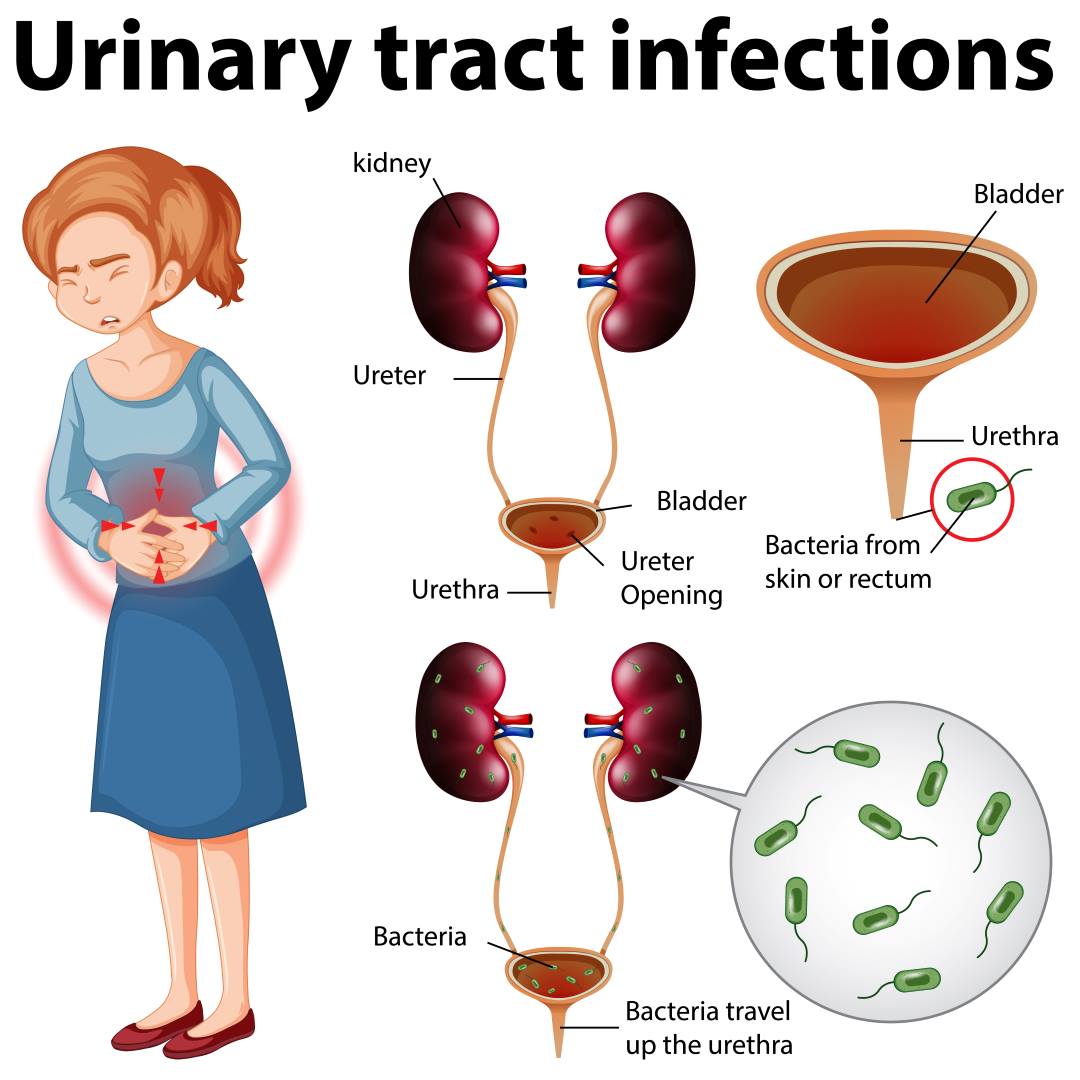
What is recurrent UTI?
A recurrent UTI is a condition when UTI keeps coming back. It is defined as UTI that has occurred at least twice in 6 months or thrice in 12 months. After the infection, 30 – 44% of women will have another one in 6 months, and half will have a 3rd infection. The most common pathogen is E.Coli, Proteus Klebsiella, Psedomonas, Serratia, and Enterococci.
What causes recurrent UTIs in women?
- Frequent intercourse (more than 3x/week)
- New or multiple sex partners
- Incomplete urination (residual urine in bladder)
- Comorbidities
- Having a UTI before 15 years old
- First-degree female relatives with recurrent UTI more than 5 times
Cranberries for preventing urinary tract infections
Cranberries as cranberry juice, tablets, or capsules have been used for many years to prevent urinary tract infections (UTIs). Cranberries contain proanthocyanidins (PACs), substances that can prevent bacteria from sticking to the wall of the bladder, hence reducing the chance of infection.
Another research suggested that cranberries make urine more acidic, which can make it harder for bacteria like E.Coli (common bacteria that cause UTI) thrive, hence reducing the chance of infection.
However, for certain individuals such as for those who are currently on medication such as warfarin, need to consult healthcare professional before using cranberry supplements to avoid any potential interaction.
References
1. Cochrane. Cranberries for preventing urinary tract infection (UTI). https://www.cochrane.org/CD001321/RENAL_cranberries-preventing-urinary-tract-infections
2. Jepson RG, Mihaljevic L, Craig J. Cranberries for treating urinary tract infections. Cochrane Database Syst Rev. 2000;1998(2):CD001322. doi: 10.1002/14651858.CD001322. Update in: Cochrane Database Syst Rev. 2023 Dec 14;12:CD001322. doi: 10.1002/14651858.CD001322.pub2. PMID: 10796775; PMCID: PMC7025796.
3. WebMD. Are cranberries good for UTI prevention? https://www.webmd.com/a-to-z-guides/cranberries-for-uti-protection

What is Urinary Tract Infection (UTI)?
What is Urinary Tract Infection (UTI)?
Urinary Tract Infection (UTI) are common infections that happen when bacteria, often from the skin or rectum, enter the urethra and infect the urinary tract.
Types of Urinary Tract Infection (UTI)
- Bladder infection – commonly known as cystitis
- Kidney infection – known as pyelonephritis
Signs and symptoms include
- Pain and burning while urinating (dysuria)
- Frequent urination
- Feeling the need to urinate despite having an empty bladder
- Bloody urine or pee that looks cloudy
- Pressure or cramping in the groin or lower abdomen
- Fever
- Chills
- Lower back pain or pain in the side of your back
- Nausea and vomiting
Risk factors include being female, as female has shorter urethra and closer to the rectum, thus, makes it easier for bacteria to enter the urinary tract.

Other risk factors include a previous UTI, recent sexual activity, changes in the bacteria that live inside the vagina or vaginal flora. For example, menopause or the use of spermicides can cause these bacterial changes, pregnancy, underlying condition such as enlarged prostate or poor hygiene, for example, in children who are potty-training.
There are some things that you can try to help prevent a urinary tract infection (UTI) from happening or from returning:
|
Do’s |
Don’ts |
|
|
Other ways to prevent UTIs coming back is by using cranberry products, available as supplement (capsules or tablets) or juices everyday. However, consider talking to your doctor before consuming any of these during pregnancy or taking blood thinning medication.
References
- Centre for Disease Control (CDC). Urinary Tract Infection Basics. https://www.cdc.gov/uti/about/index.html#:~:text=UTIs%20are%20common%20infections%20that,up%20the%20urethra%20a
- National Health Service (NHS). Urinary Tract Infection (UTIs). https://www.nhs.uk/conditions/urinary-tract-infections-utis/

Childhood Obesity in Malaysia: A Growing Concern
Childhood obesity has emerged as a pressing health issue in Malaysia, signaling the need for urgent attention and intervention. This article delves into the prevalence, demographics, and factors influencing the alarming rise of childhood obesity in the country.
Prevalence:
Malaysia, like many other countries, has seen a significant increase in childhood obesity in recent years. The prevalence of childhood obesity in Malaysia has more than tripled over the past two decades. According to the National Health and Morbidity Survey (NHMS) 2019, approximately 20% of children aged 5 to 17 in Malaysia are overweight or obese. This statistic is particularly concerning, as it points to a rising trend that threatens the well-being of the nation's future generation.
Demographics:
Childhood obesity in Malaysia affects various demographic groups, but it is more pronounced in urban areas. Urbanization has brought about lifestyle changes, including a shift towards more sedentary activities and a higher consumption of processed foods, which contribute to weight gain and obesity. Additionally, the prevalence of childhood obesity tends to be higher among boys than girls, with a notable increase in obesity among children of Indian ethnicity.
Factors Influencing Childhood Obesity:
- Dietary Habits: One of the primary drivers of childhood obesity in Malaysia is an unhealthy diet. The increased availability of fast food and sugary beverages has led to excessive calorie consumption. Traditional diets that were once rich in fruits, vegetables, and whole grains have been replaced by processed and high-calorie foods.
- Lack of Physical Activity: Sedentary behavior, particularly among school-going children, has become a concerning trend. The use of electronic devices, coupled with limited access to safe and active play spaces, has led to a decrease in physical activity.
- Socioeconomic Factors: Socioeconomic disparities also play a role in childhood obesity. Families with lower incomes may have limited access to nutritious foods, making them more reliant on cheaper, calorie-dense options.
- Parental Influence: Parents' dietary choices and lifestyle habits significantly impact their children's health. Parents who model healthy behaviors, such as regular exercise and balanced eating, are more likely to have children who adopt similar practices.
- Marketing and Advertising: The aggressive marketing of unhealthy foods and sugary beverages, often targeted at children, further exacerbates the issue. Eye-catching advertisements can lure children into consuming calorie-laden, low-nutrient products.
Addressing Childhood Obesity:
Efforts to combat childhood obesity in Malaysia must be multifaceted and include:
- Education: Raising awareness among parents, caregivers, and children about the importance of a balanced diet and physical activity is crucial. Schools can play a significant role in promoting healthy lifestyles.
- Policy Changes: Implementing policies that restrict the marketing of unhealthy foods to children and promote the availability of nutritious options in schools and public spaces is essential.
- Physical Activity Promotion: Encouraging children to engage in regular physical activity through school programs and community initiatives can help combat sedentary lifestyles.
- Support for Low-Income Families: Programs that provide financial support and incentives for low-income families to access healthier foods can mitigate socioeconomic disparities.
- Healthcare Interventions: Healthcare providers should actively monitor and provide guidance to overweight and obese children and their families.
In conclusion, childhood obesity in Malaysia is a critical issue that demands immediate attention. The prevalence is on the rise, impacting various demographic groups. A combination of factors, including dietary habits, sedentary behavior, and socioeconomic disparities, contributes to this epidemic. Addressing childhood obesity requires collaborative efforts from policymakers, healthcare providers, educators, and parents to ensure the well-being of Malaysia's future generations. Only by working together can the nation hope to reverse the alarming trend of childhood obesity and promote a healthier, more prosperous future.
References
- New Straits Times. When big is not better. https://www.nst.com.my/lifestyle/heal/2022/04/786913/when-big-not-better
- Code Blue. Malaysian Children Heavier than Asea Neighbours, Expert Says. https://codeblue.galencentre.org/2019/09/18/malaysian-children-heavier-than-asean-neighbours-expert-says/
- Sidik SM, Ahmad R. Childhood obesity: contributing factors, consequences and intervention. Malays J Nutr. 2004 Mar;10(1):13-22. Epub 2004 Mar 15. PMID: 22691744.

Children and Immunization
Immunization, a critical facet of pediatric healthcare, involves the administration of vaccines to children to bolster their immune systems against various infectious diseases. These vaccines typically consist of weakened or inactivated viruses, as well as whole or partial bacterial components. They are commonly administered via injection, either into the muscle or beneath the skin, or orally. The primary goal of immunization is to safeguard both the individual and the broader community from disease outbreaks. It's important to note that side effects resulting from vaccinations are infrequent and, when they do occur, tend to be mild in nature.
Vaccines consist of antigens derived from either virus or bacteria, in whole or part, and are rendered nonfunctional or weakened. The primary purpose of these vaccines is to stimulate the immune system's response, ultimately establishing protective immunity against specific diseases. Today, many vaccines are available in combination formulations, simplifying the administration process. These combination vaccines amalgamate multiple vaccines into a single injection, offering children protection against numerous diseases in a single dose, thereby rendering the process less painful and more convenient.
In Malaysia, the National Immunization Program (NIP) was introduced in the early 1950s, taking its cues from the World Health Organization's (WHO) Expanded Immunization Program (EPI). The WHO EPI recommends that all countries immunize against six childhood diseases, but in Malaysia, the NIP has expanded protection to cover 13 major childhood diseases.
The 13 preventable diseases under the Malaysia National Immunization Program are as follows:
- Diphtheria: An infectious disease caused by bacteria that reside in the mouth and throat of the infected individual.
- Haemophilus Influenza type B (Hib): A severe infection that predominantly affects children under the age of 5.
- Hepatitis B: An infection of the liver caused by the Hepatitis B virus.
- Human Papillomavirus (HPV): The most common sexually transmitted infection (STI) that can lead to cervical cancer, the third most prevalent cancer in women.
- Japanese Encephalitis (JE): A viral infection that affects the brain, caused by the JE virus.
- Measles: A highly contagious viral disease.
- Mumps: A viral infection that is the primary cause of encephalitis or brain inflammation.
- Pertussis (Whooping Cough): Highly contagious and characterized by violent, persistent coughing that can lead to breathing difficulties and cyanosis (turning blue).
- Poliomyelitis (Polio): An infectious and incurable viral disease that attacks the nervous system.
- Rubella: Also known as German measles, it can cause fetal abnormalities.
- Tetanus: Also known as lockjaw, caused by bacterial toxins that affect the nervous system.
- Tuberculosis (TB): A disease that primarily affects the lungs but can also impact other body parts such as the kidneys, spine, skin, intestines, and brain.
- Pneumococcal: A bacterial infection caused by Streptococcus pneumonia that can affect the lungs and other parts of the body.

The importance of these vaccinations remains paramount in today's advanced healthcare landscape. While healthcare systems and technologies continue to advance, several factors necessitate childhood immunization:
- Underdeveloped Immune Systems: Infants and children have immune systems that are not yet fully developed. Vaccinations play a pivotal role in training and strengthening a child's immune system, thereby protecting them from potentially life-threatening complications.
- Maternal Immunity Is Insufficient: Although newborns may receive some immunity, in the form of antibodies, from their mothers during the last weeks of pregnancy and through breast milk, this maternal immunity is limited in scope and duration. It only protects infants from diseases to which the mother is immune, lasting approximately nine months. Once this maternal immunity wanes, infants become susceptible to various diseases.
- Risks of Natural Infection: Relying on natural infection to develop immunity can be perilous. Children's bodies may not always effectively combat these diseases, leading to the necessity of experiencing and recovering from the disease, which in turn puts them at risk of life-threatening complications. Childhood immunization provides a safe and effective alternative, offering protection comparable to that of natural immunity without subjecting children to such risks.
In conclusion, childhood immunization serves as a cornerstone of public health and child well-being. It safeguards children against a wide array of diseases, ensuring their health and contributing to community-wide disease control. The rationale behind immunization, even in a modern healthcare landscape, remains robust, considering the imperfections and limitations of natural immunity and the imperative of bolstering the still-developing immune systems of infants and children. By adhering to comprehensive vaccination programs, we can protect the most vulnerable members of society, securing a healthier future for all.
References
- Immunise for life. The Importance of Childhood Immunization. https://immunise4life.my/the-importance-of-childhood-immunisation/
- Immunise of life. Malaysia National Immunization Program. https://immunise4life.my/the-malaysian-national-immunisation-programme-nip/
- Ministry of Health Malaysia (MOH). MyHealth Portal. Immunization: Facts and Myths http://www.myhealth.gov.my/en/immunisation-facts-myths/
- Ministry of Health Malaysia (MOH). My Health Portal. Introduction to Immunization. http://www.myhealth.gov.my/en/introduction-of-immunisation-2/
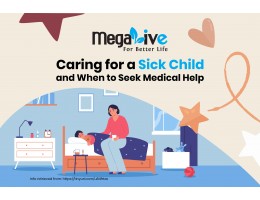
Caring for a Sick Child and When to Seek Medical Help
Childhood illnesses are an inevitable part of growing up, and it's no surprise that little ones frequently fall ill, given their developing immune systems. This is especially common among children in daycare or preschool environments. While illness can bolster their immune defenses, it can also be a cause of concern for working parents who grapple with the challenge of tending to their unwell children while juggling professional responsibilities.
In this article, we offer valuable tips to aid parents and guardians in providing comfort and care to their sick kids at home.
Listen to Your Child: The first and foremost step when your child falls ill is to lend them your ears. Pay close attention to their complaints, pinpointing any specific discomfort or pain areas. Keeping a record of their symptoms will prove invaluable when discussing the situation with a doctor.
Ensure Adequate Ventilation: Maintain proper air circulation in the room where your child is resting. Fresh air can make them feel more at ease and can help improve their overall well-being.
Warm Baths for Comfort: A warm bath can work wonders in soothing your sick child. It helps alleviate aches and pains, while the steam from the warm water aids in clearing congestion.
Cooling Down with Tepid Sponges: If your child has a fever, use tepid sponges to help lower their body temperature.
Comfortable Clothing: Dress your child in soft, comfortable clothes to keep them cozy.
Stay Hydrated: Offer your child plenty to drink, even if they're not up for eating, especially during the initial stages of illness. Nutrient-rich drinks like milk can help provide necessary sustenance.
Engage with Them: Once your child is ready, engage them with quiet games, stories, or simply your company for comfort and companionship.
Prioritize Rest: Illness can be exhausting, and your child needs plenty of rest. Encourage them to nap as needed, perhaps with a soothing bedtime story.
So, when should you consult a doctor? The signs and symptoms vary based on your child's age. For instance, if your child is less than two months old and has a fever with a temperature exceeding 37.5 degrees Celsius, it's crucial to seek medical attention immediately. For older children, the primary concern is ensuring they stay hydrated. If they can't tolerate food or drinks and are experiencing issues like vomiting, diarrhea, or difficulty swallowing, consult a doctor promptly.
Look out for signs of dehydration, which can include fewer wet diapers (less than six per day in infants), dark urine, dry diapers, dry, cracked lips, sunken eyes, crankiness, and a sunken soft spot on the top of the head in babies younger than 18 months.
In summary, caring for a sick child requires a delicate balance of attention, comfort, and medical vigilance. By following these tips and recognizing when to seek professional help, you can ensure your child's well-being during their journey to recovery.
References
- National Health Service (NHS) (UK). Looking after a sick child (Nov 2021). https://www.nhs.uk/conditions/baby/health/looking-after-a-sick-child/
- InformedHealth.org [Internet]. Cologne, Germany: Institute for Quality and Efficiency in Health Care (IQWiG); 2006-. Fever in children: Overview. 2013 Dec 18 [Updated 2019 Jun 6]. Available from: https://www.ncbi.nlm.nih.gov/books/NBK279455/

Benefits of EPA and DHA for children
EPA and DHA are a type of Omega 3 (essential fatty acids). One of its most important benefits is to give the anti – inflammatory effect to the body. A lot of diseases, like heart diseases, and arthritis, seem to be related to an inflammatory process, therefore EPA and DHA are important as they help body to turn down the inflammation hence prevent some of these chronic diseases.
As for children, studies on infants, prenatal health, and pregnancy, found out that it can help with:
- Cognitive function
Brain grows at the greatest rate from birth until about 2 years old of life. Over 60% of the brain is made up of fat, 10 – 15% of it is from DHA. It is necessary for the development of sensory, perceptual, cognitive, and nerve system.
Study that was conducted on cognitive function and EPA and DHA consumption shows that children born to a mother who consumed DHA and EPA during pregnancy have higher score on cognitive test at 4 years old as compared to children whose mothers did not consume EPA and DHA supplement during pregnancy and breastfeeding.
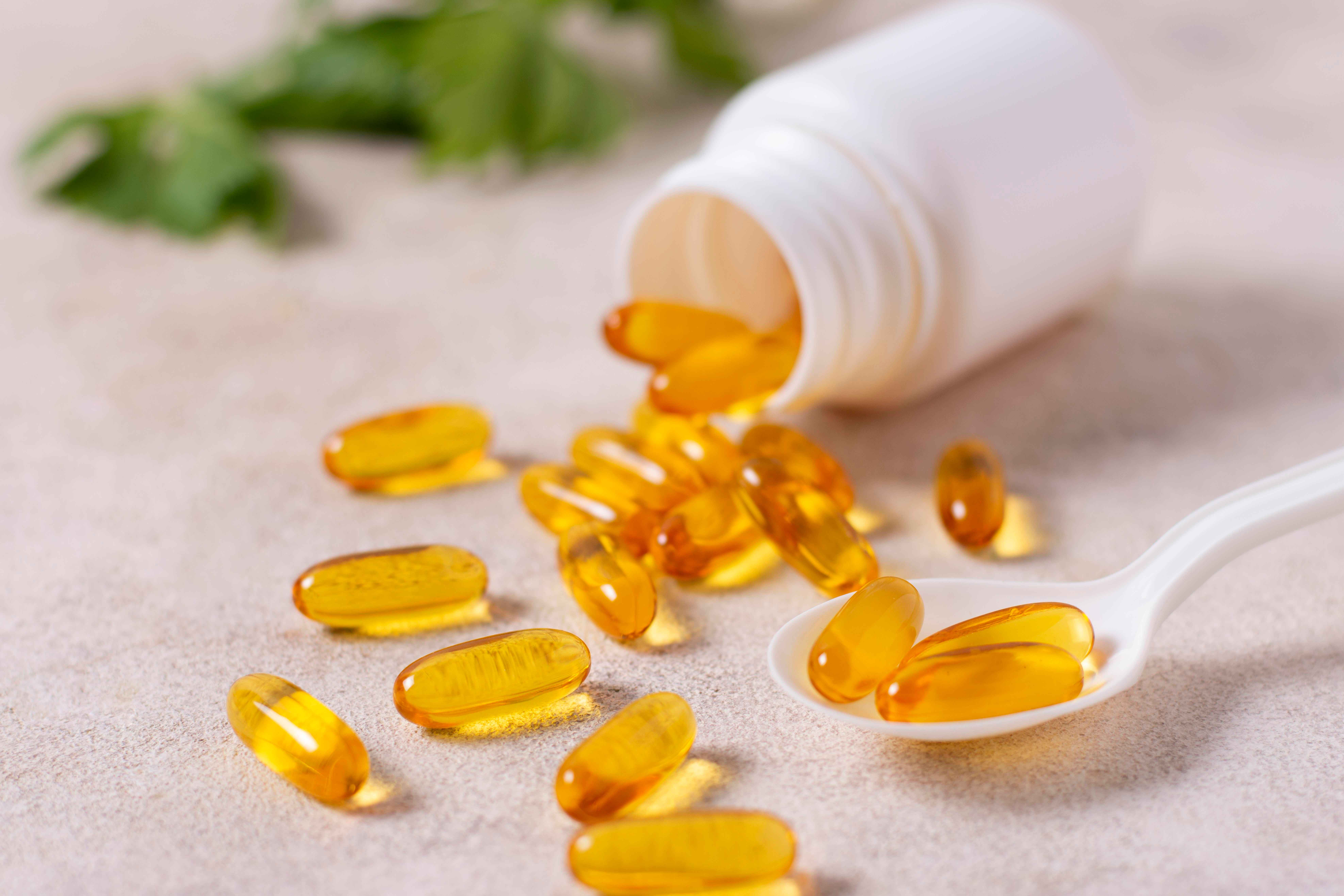
- ADHD
Attention -deficit/hyperactivity disorder (ADHD) is a common neurodevelopmental disorder. Study have shown that children with ADHD have lower levels of EPA and DHA when compared to those without ADHD, a few small studies look at the consumption of fish oil supplement as treatment, and found out that the supplements might improve behavior, reduces hyperactivity, and boost attention in children below 12 years old.
Another article reviewed a range of studies carried out between 2000 – 2015 found out that the result of consuming EPA and DHA to the benefits of ADHD are somewhat inconsistent. However, an article published on 2019 concluded that combined doses of EPA and DHA equal to or above 750 mg per day for more than 12 weeks have shown improvements on symptoms of ADHD.
- Growth
There is evidence that when EPA and DHA are added to formula milk, it promotes growth and brain development in premature infants. However, breast milk is the ideal milk for baby, it is also a great source of EPA and DHA, although it varied depending on mothers’ diet it still is the best milk for children.
References
- Nutriadvance. Top 10 Reasons to Give Your Kids Omega 3. https://www.nutriadvanced.co.uk/news/top-10-reasons-to-give-your-kids-omega-3/ (Retrieved on Sept 28, 2022).
- WebMD. Nourish by WebMD. Who Needs Omega 3s? https://www.webmd.com/diet/features/who-needs-omega-3s (Retrieved on Sept 28, 2022).

EPA and DHA for children
EPA and DHA are a type of Omega 3 or fatty acid that play a vital role for various health functions such as brain function, heart health, and immunity.
EPA and DHA are converted from Alpha – Linolic Acid (ALA) in the body. ALA can be found in variety of plant-based foods, such as vegetables oils, nuts, and seeds. However, the conversion of ALA to EPA and DHA is in a very small amount.
Other than from the ALA source, EPA and DHA are widely available in supplements, and naturally found in fatty fish such as mackerel, tuna, and salmon.
During the first year of life, babies get their EPA and DHA from either breast milk or fortified formula.
As for toddler and young children, different age and gender requires different amount of EPA and DHA as per follows:
0 to 12 months: 0.5 grams/day
1 to 3 years: 0.7 grams/day
4 to 8 years: 0.9 grams/day
9 to 13 years (boys): 1.2 grams/day
9 to 13 years (girls): 1.0 grams/day
14 to 18 years (boys): 1.6 grams/day
14 to 18 years (girls): 1.1 grams/day
It is extremely important to get the required amount of EPA and DHA during critical period of children’s rapid growth as it can help with brain development, cognitive function, and eye development.

There are also studies indicates that EPA and DHA may improve symptoms of ADHD, reduces asthma, promotes better sleep, and enhances brain health.
In conclusion, apart from ensuring children’s diet is balanced and variety, it is also best to top up their nutrient intake upon recommendation from healthcare professional. Talk to your healthcare professional whether your child require supplementation etc.

Your Immunity Booster
Since 1970, vitamin C has been widely used to fight and prevent the common cold. Nowadays, everyone knows that taking vitamin C can help prevent and fight the common cold (1).

A study shows that vitamin C contributes to immune defence by supporting various cellular functions. Vitamin C helps phagocytes (cells that ingest harmful bacteria into the body) to move, increase uptake, engulf, and kill microbes (which can cause harm to the body), thus improving the immune system and protecting against diseases (2).
Probiotics work in a similar way to vitamin C in improving the immune system.
But what are probiotics?
Probiotics are live microorganisms that, when administered in an adequate amount, confer health benefits on the host (the human body). A study found that long-term consumption of probiotics could stimulate and improve the immune system. With regards to the current pandemic novel Coronavirus, how can probiotics help with viruses like Corona? Well, Corona is the virus that attacks the lung, thus;
Probiotics are able to help lung health, but how?
The truth is, the physiology and pathology of the respiratory and gastrointestinal tracts are closely related. This may explain why smokers who are diagnosed with chronic obstructive pulmonary disease (COPD) usually have inflammatory bowel disease (IBD) as well (3).
The mechanism in which it works is that once oral probiotics are administered, they will interact with cells in the gut and improve the composition and activity of microbiota in the gut. This will then send a signal to activate Immunoglobulin A (an antibody that has a protective function) in the intestine, bronchus (part of the lung), and mammary gland and suppress the pathogen (bad bacteria), which in turn will improve the respiratory system and overall immune health (4).
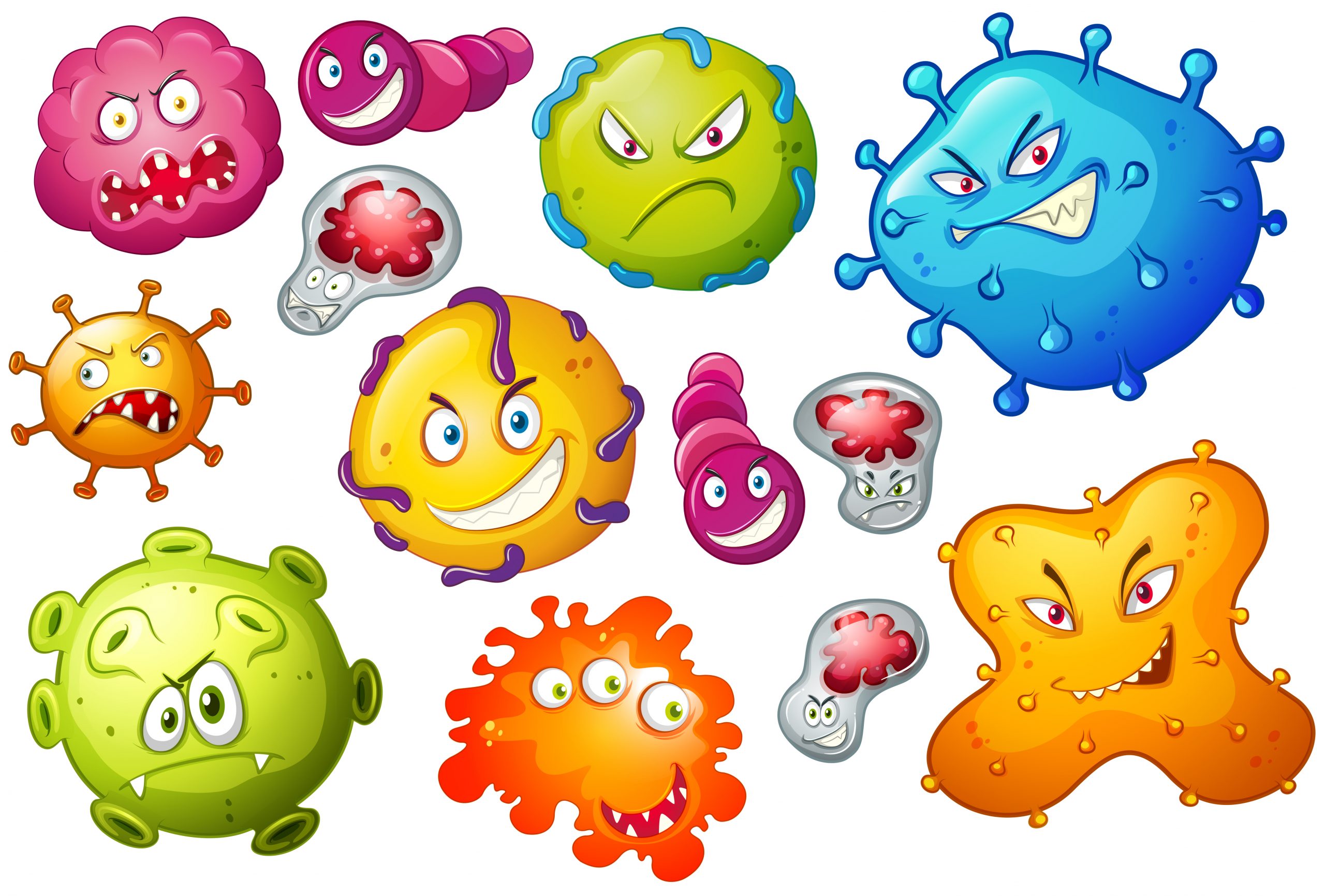
Using probiotics along with taking precautionary measures such as frequently washing hands, using sanitizers, wearing a mask, and avoiding contact with people is the go-to way to prevent the widespread spread of the disease while at the same time improving immune function since probiotics are ubiquitous and affordable!
References
- WebMD. Vitamin C for the common cold.
- Carr, A. C., & Maggini, S. (2017). Vitamin C and Immune Function. Nutrients, 9(11), 1211. https://doi.org/10.3390/nu9111211
- Esmaeil Mortaz, Ian M. Adock, Gert Folkters, Peters J. Barnes, Arjan Paul Vos and Johan Garssen (2013). Probiotics in the management of Lung Disease. Hindawi, 2013. https://doi.org/10.1155/2013/751068
- Carolina Maldonado Galdeano, Silvia Ines Cazorla, Jose Maria Lemme Dumit, Eva Velez, Gabriela Perdigon (2019). Beneficial effect of Probiotic consumption on the Immune System. Annals of Nutrition & Metabolism 74(115-124). DOI: 10.




